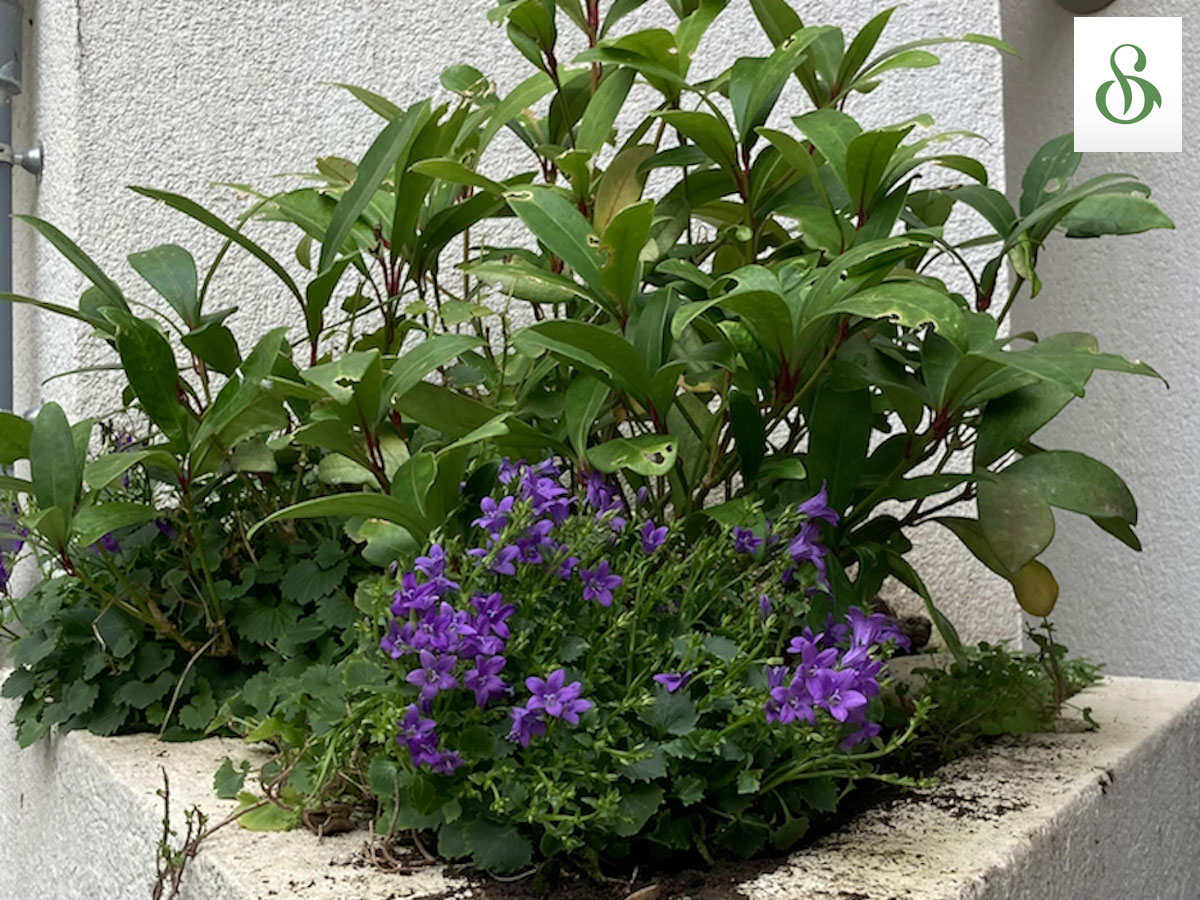
Cartography of a Garden
Paris - September 30th - October 1st 2021
(sur invitation - by invitation)
Sommaire :
Introduction
The workshop ‘Cartography of a Garden’ investigates how to renew our relations to plants and how to address the plant biodiversity crisis through a multiperspective art-science approach by looking at our close environment.
What is a garden? Is it the same for a botanist, a molecular biologist, a philosopher, a visual artist, a sound artist, the owner, the gardener, a curator, for the birds nesting in the trees and bushes, for the worms, fungi and bacteria in the soil, for the plants themselves?
Which plants actually? Some of our garden plants that we believe to be « European » are actually coming from far away. What do we know about them? Are they natives or migrants? Are they invasive species or endangered by climate change and other threats? Are they old local, even endemic, species or more recently human-engineered?
This workshop, one of the three organised under the project Roots and Seeds XXI. Biodiversity Crisis and Plant Resistance gathers a limited number of participants (by invitation only) that include scientists, artists, philosophers and cultural players. For Cartography of a Garden, we replay the 19th century expeditions but with the knowledge and approaches of the 21st. We don’t go « far away to unknown places » but stay « home », litteraly in our European backyard: the garden of Leonardo/Olats headquarters (Boulogne-Billancourt/Paris area). How does vegetation growing in the middle of a dense urban fabric, in the tiny portion of soil that Humans are kind enough to grant it, resists in our surburban concrete garden?
L’atelier ‘Cartography of a Garden’ (Cartographie d’un jardin) explore comment reconsidérer notre relation aux plantes et comment prendre en compte la crise de la biodiversité végétale par le biais d’un examen de notre environnement proche dans une approche art-science plurielle.
Qu’est-ce qu’un jardin? Est-ce le même pour un botaniste, un biologiste moléculaire, un philosophe, un plasticien, un artiste sonore, le propriétaire, le jardinier, un conservateur, pour les oiseaux nichant dans les arbres et les buissons, pour les vers, les champignons et les bactéries dans le sol, pour les plantes elles-mêmes? Quelles plantes en fait? Certaines des plantes de nos jardins que nous croyons être « européennes » viennent en fait de très loin. Que savons-nous d’elles? Sont-elles d’ici ou migrantes? S’agit-il d’espèces invasives ou menacées par le changement climatique et autres dangers ? S’agit-il d’anciennes espèces locales, voire endémiques, ou plus récemment créées par les êtres humains ?
Cet atelier, l’un des trois organisés dans le cadre du projet Roots and Seeds XXI. Biodiversity Crisis and Plant Resistance réunit un nombre limité de participants (sur invitation uniquement) qui incluent des scientifiques, des artistes, des philosophes et des acteurs culturels. Pour Cartographie d’un jardin, nous réinterprétons les expéditions du 19e siècle mais avec les connaissances et les approches du 21e. Nous n’allons pas « au-delà des mers vers des lieux inconnus » mais nous restons « chez nous », littéralement dans notre arrière-cour européenne: le jardin du siège de Leonardo/Olats (Boulogne-Billancourt/région parisienne). Comment la végétation qui pousse au milieu d’un tissu urbain dense, dans la minuscule portion de sol que les Humains ont la gentillesse de lui accorder, résiste-t-elle dans notre jardin de bitume et béton?
Team
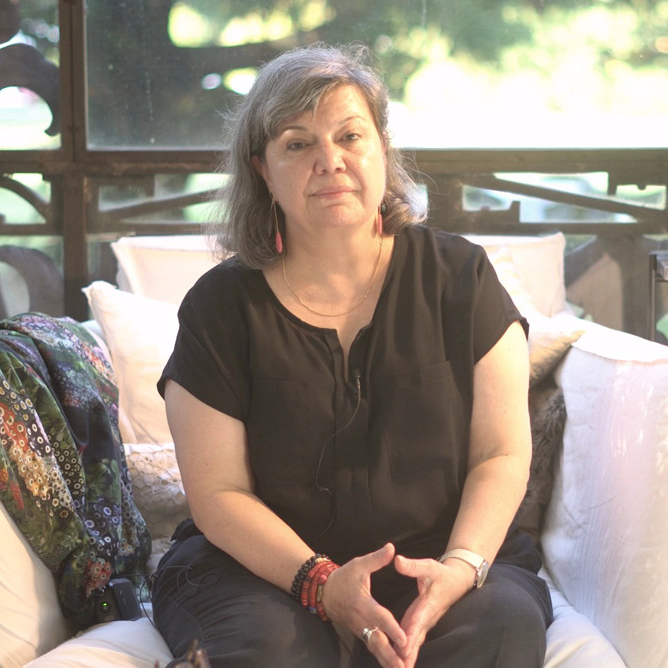
Annick Bureaud
Directrice Leonardo/Olats, Roots & Seeds XXI team
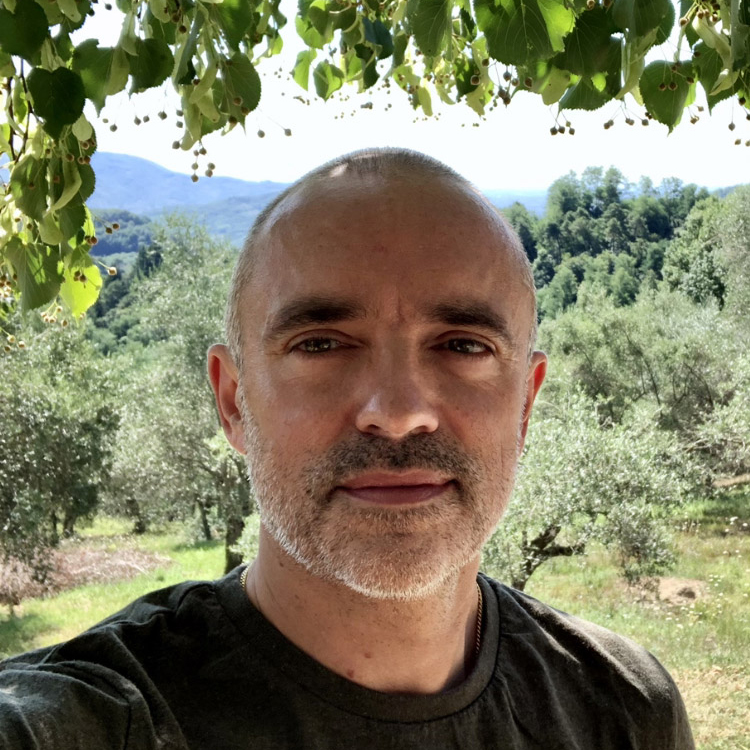
Jean-Luc Soret
Independent curator, Roots and Seeds XXI team
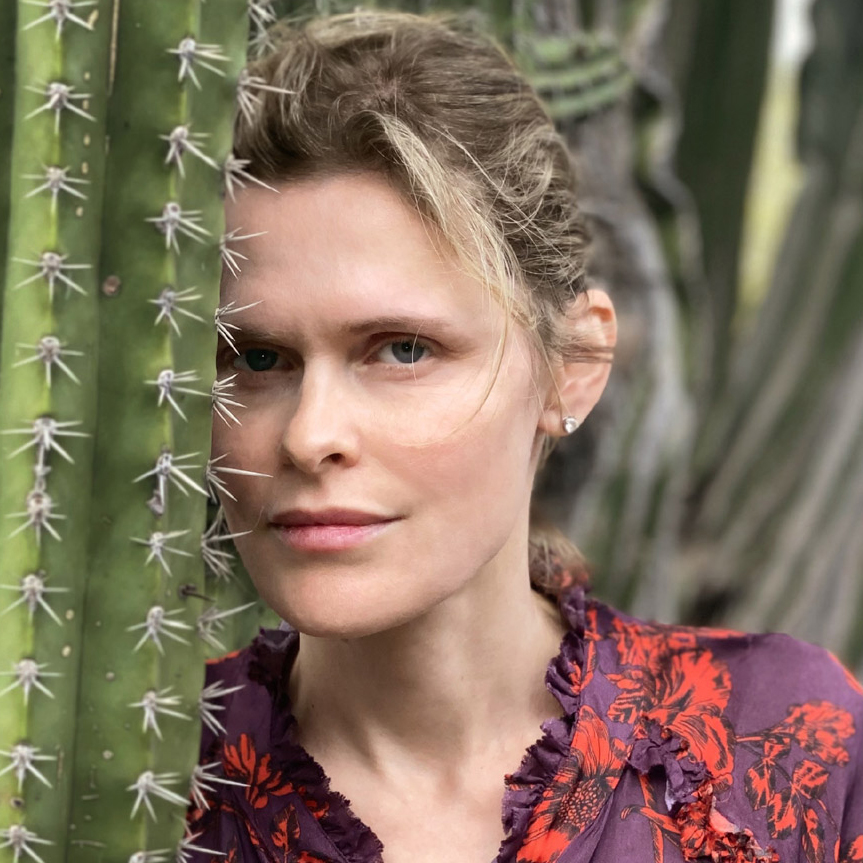
Tatiana Kourochkina
Director and co-founder of Quo Artis, Roots & Seeds XXI team
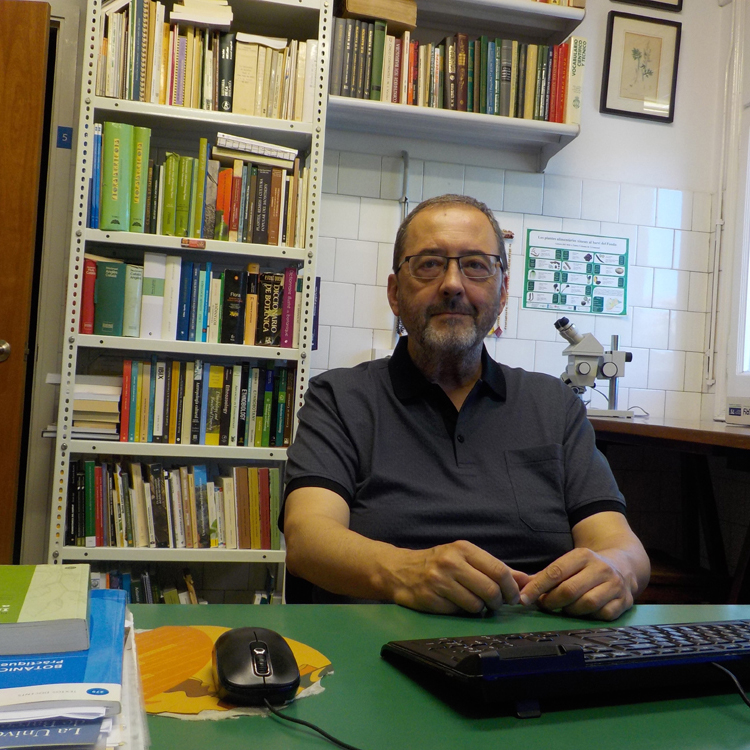
Joan Vallès Xirau
Professor of Botany at the Universitat de Barcelona and member of the Institut d'Estudis Catalans (Catalan Academy of Sciences and Humanities), Roots & Seeds XXI team Field of Work and Research: Ethnobotany, Plant systematics and evolution, History of Botany, Botanical terminology
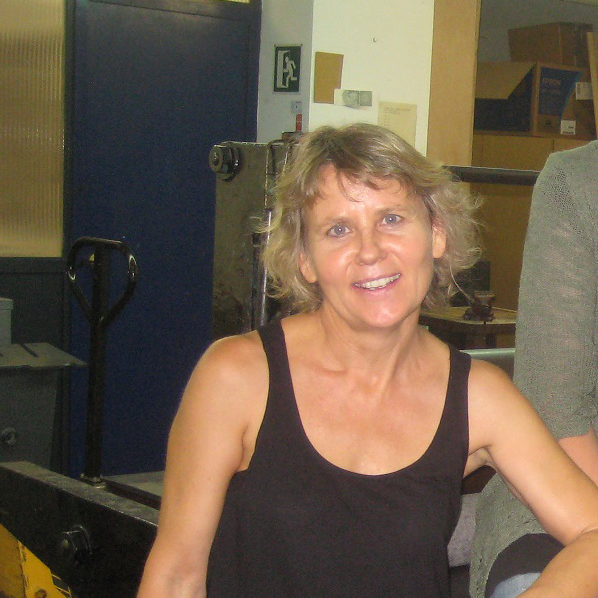
Eva Figueras Ferrer
Professor of Engraving, Faculty of Fine Arts, University of Barcelona, Roots & Seeds XXI team Field of Work and Research: Liminal poetics and sustainability.
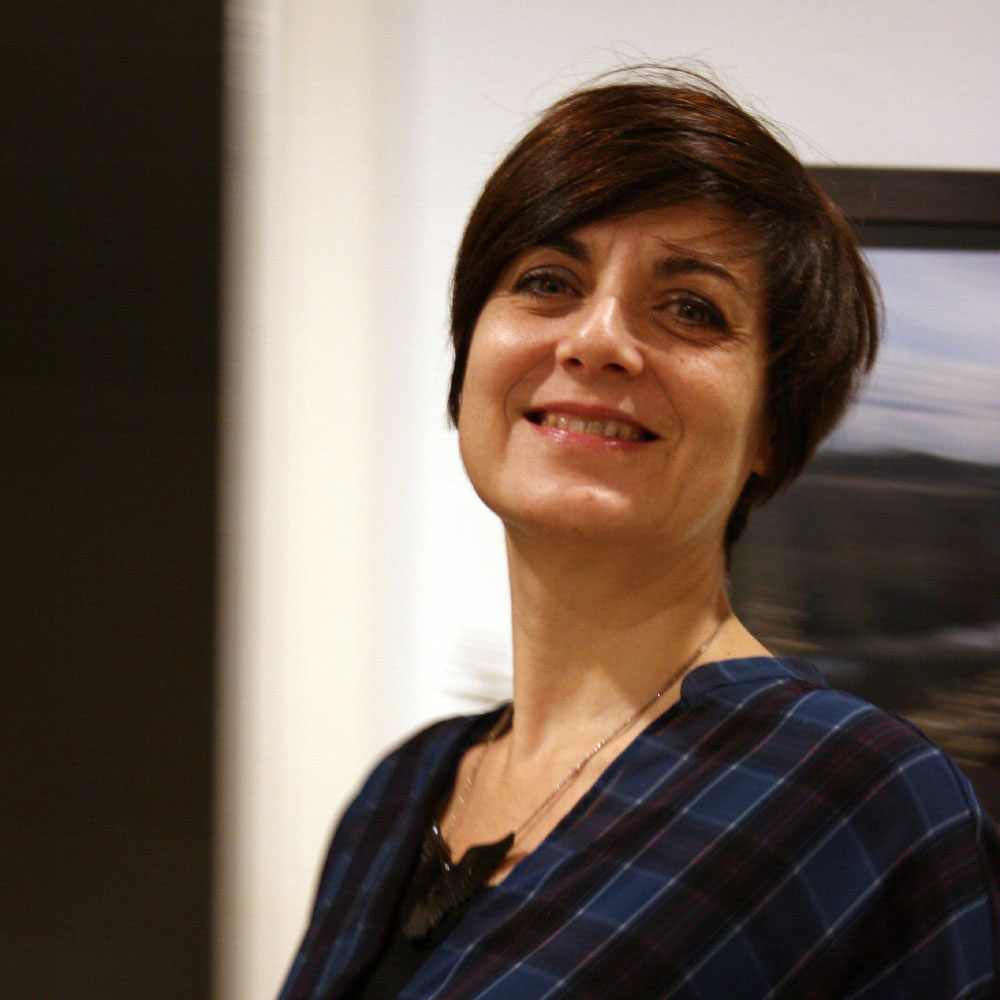
Mar Redondo Arolas
Lecturer, Faculty of Fine Arts, University of Barcelona, Roots & Seeds XXI team Field of Work and Research: Photography and Visual Arts. Liminal poetics and sustainability
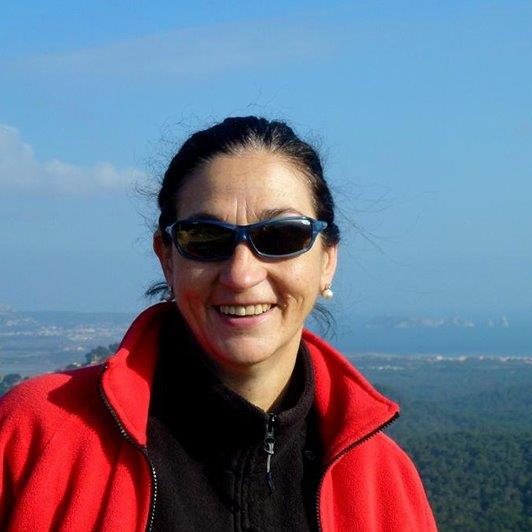
Teresa Garnatje Roca
Senior researcher at the Botanical Institute of Barcelona (CSIC), Roots & Seeds XXI team - Field of Work and Research: Ethnobotany, Evolutionay biology, Genome evolution
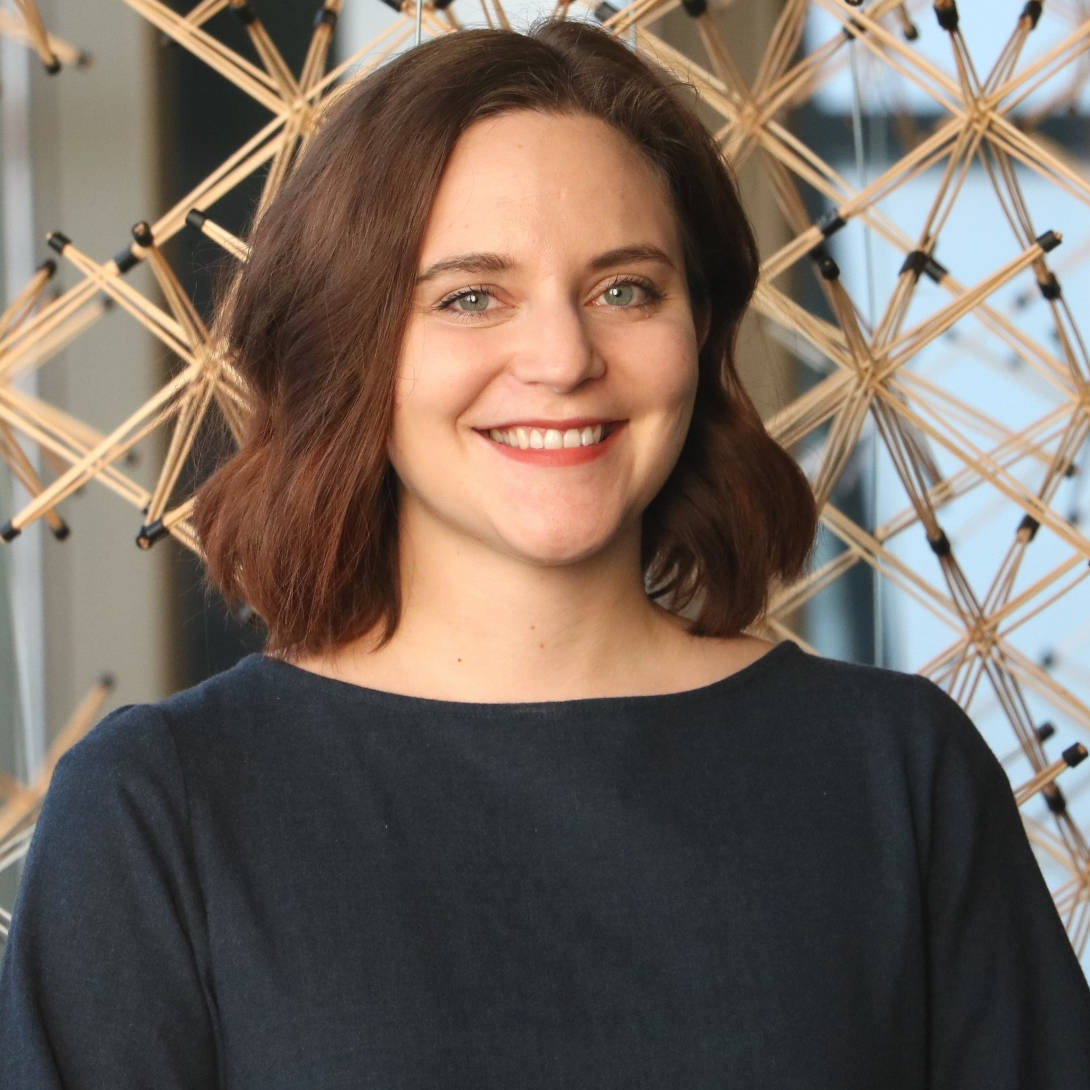
Kristina Maurer
Head of European Projects, Ars Electronica Linz GmbH, Roots & Seeds XXI team
Participants
Participants : Karine Bonneval | Lucie Campagnolo | Laura Cinti | Kim Doan Quoc | Lauranne Germond | Loïc Le Noan | Michael Marder | Marit Mihklepp | Sophie Nadot | Cyrille Prestianni | Meredith Root-Bernstein | Marc-André Selosse | Anaïs Tondeur
Karine Bonneval - Se planter
Se planter
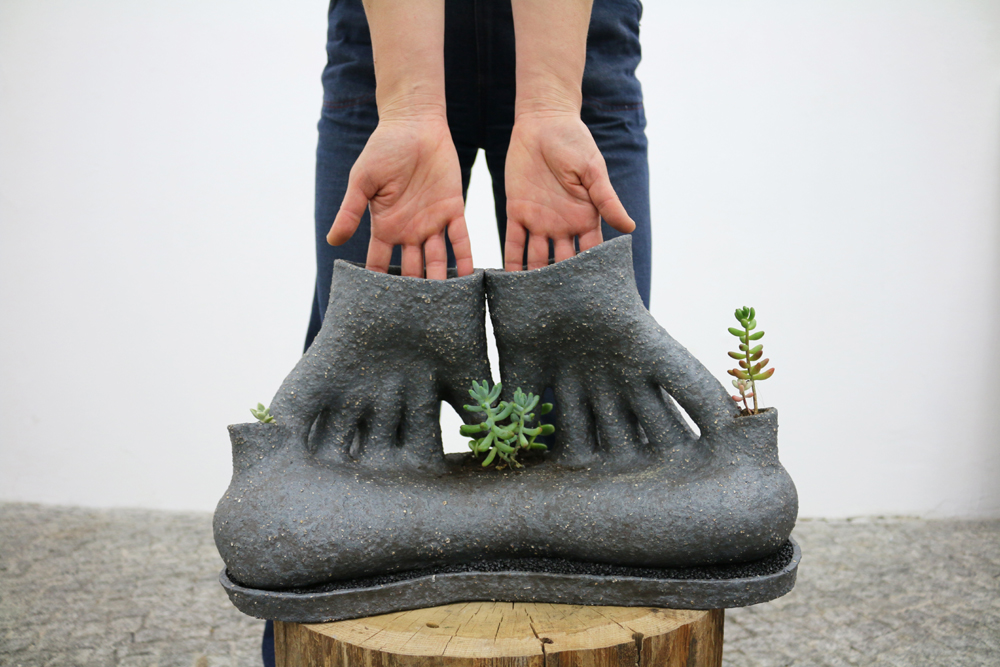
Karine Bonneval, Se planter, ceramic and crassulae in soil, collective show Dé-jardiner at Gr_und, Berlin, Pespektive grant, 2019, image © James Verhille
This expression means to fail in French. However, being anchored to the ground goes with plants’ great capacity for analysis, adaptation and complex interactions with the world around them.
After a reference to the projects Breathing with a tree and Listening to the soil, I will talk about Vertimus, an ongoing research about the movement of plants and our shared perceptions. In order to change our ways of thinking about the plants we might focus on what we do have in common. We are the living defending ourselves (B. Morizot).
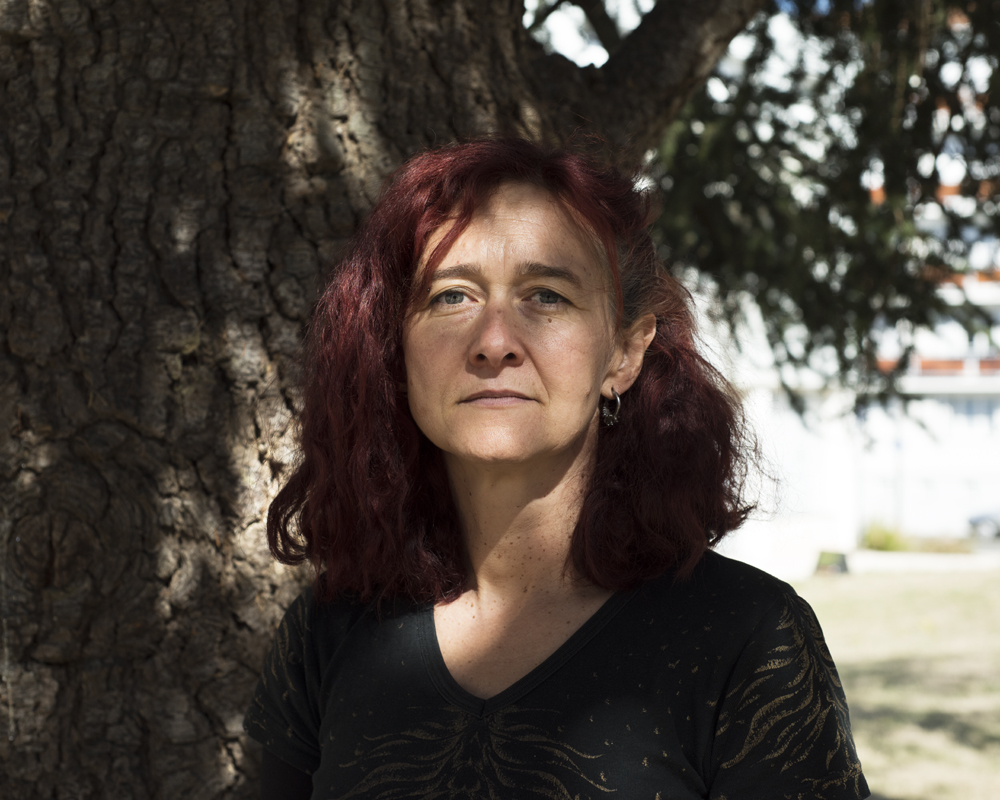
Karine Bonneval, image © Eva Avril, 2019
Born in 1970 in La Rochelle. Lives and works in Pesselières, Cher.
Karine Bonneval’s work proposes ways of being in the world shared by plants and humans. In her installations, we are immersed into a world of organic and fictional forms, where hybridisations between art and science sometimes mischievously divert technology to propose pieces with an aesthetic coming from the world of handmade, vernacular.
By developing projects to breathe with a tree, listen to the soil, move with plants, the artist imagines installations to be experienced as translators, to live for a moment a time shared with the plants, in dialogue with the air, the ground, gravity.
In collaboration with teams of scientists in plant ecophysiology and pedology, her projects seek ways to interact differently with the rest of the living world: Institut Diversité, Ecologie et Evolution du Vivant and neuroPsi, Orsay University, Paris-Saclay / Rillig Lab, Freïe Universität Berlin / INRAE PIAF, Clermont-Ferrand / Soil and crops science section, Cornell University, USA.
After graduating from the Ecole Nationale Supérieure des Beaux Arts d’Angoulème and the Ecole Supérieure des Arts Décoratifs de Strasbourg, Karine exhibited in France (Nuit Blanche / Domaine de Chaumont sur Loire / Micro-Onde / la Maréchalerie / la Graineterie / le Transpalette), Germany (Bourse Perspektive / Botanical museum Berlin), Latvia (Un/Green Exhibition), Denmark (AroS contemporary art museum, Haarus), USA (Cornell experimental gallery), Argentina (Centro Cultural Recoleta, Buenos Aires), Sri Lanka (Cinnamon Colomboscope).
With scientist Eric Badel (INRAE PIAF) and Studio Décalé, she won the Carasso Foundation’s grant « Composer les savoirs » in 2019.
Références
1 – Raviver les braises du vivant, un front commun, Baptiste Morisot, Actes Sud, 2020
2 – How Forests Think: Towards and Anthropology Beyond the Human, Eduardo Kohn, University of California Press, 2013.
3 – Sounds of soil: A new world of interactions under our feet? Matthias C. Rillig, Karine Bonneval, Johannes Lehmann, MDPI, Soil Systems, 2019
Dr. Lucie Campagnolo - Un jardin dans l’espace / A Garden in Space
Independent consultant for space companies, Apollo Moment Consulting
Un jardin dans l’espace / A Garden in Space
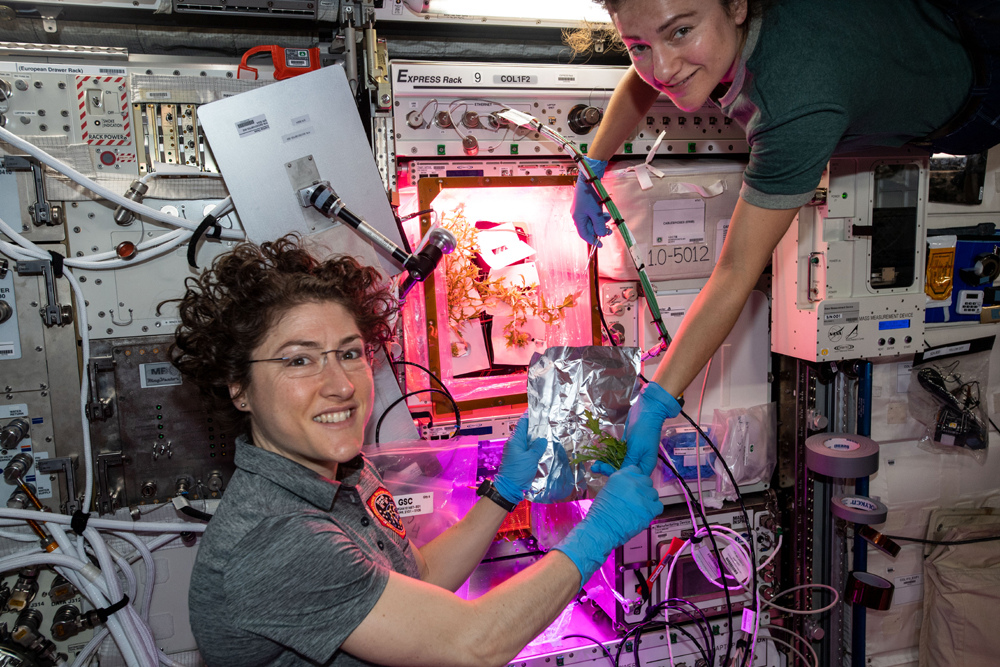
Nov. 28, 2019 --- NASA astronauts (left to right) Christina Koch and Jessica Meir harvested Mizuna mustard greens on Thanksgiving day inside the ESA (European Space Agency) laboratory module's VEGGIE facility. Source: NASA
Why growing plants in outer Space has elicited so much interest over the past decades? We are going to investigate the role of crops, vegetables and flowers in the human exploration history.
In the early ages of Space Exploration, the scientists were focused on the study of plant growth in space, and in particular on the effect of gravity (or the absence of) on root development under artificial lighting, optimized soil media, controlled atmosphere and radiative environnement.
They were particularly interested in understanding whether plant growth patterns are innate or environmentally driven, but also which gene expression is affected under space environment-induced oxidative stress. Besides fundamental scientific questions, plants were also cultivated in space to serve as possible nutrient sources for astronauts in order to supplement stored foods when space mission distances and durations increase, such as for long term bases on the Moon and Mars.
Very sophisticated green houses have also been developed as parts of Life-Support Systems, which are closed-loop artificial ecosystems able to create an artificial environnement where human can live in. In this case, plants can play multiple roles, from air purification to water filtration or waste management.
Finally, plants are an essential components to our humanity, and can be used as psychological countermeasures against isolation and loneliness, as shown by the experiment EKLO sent to the International Space Station, where Thomas Pesquet has to take care of a fragile flower.
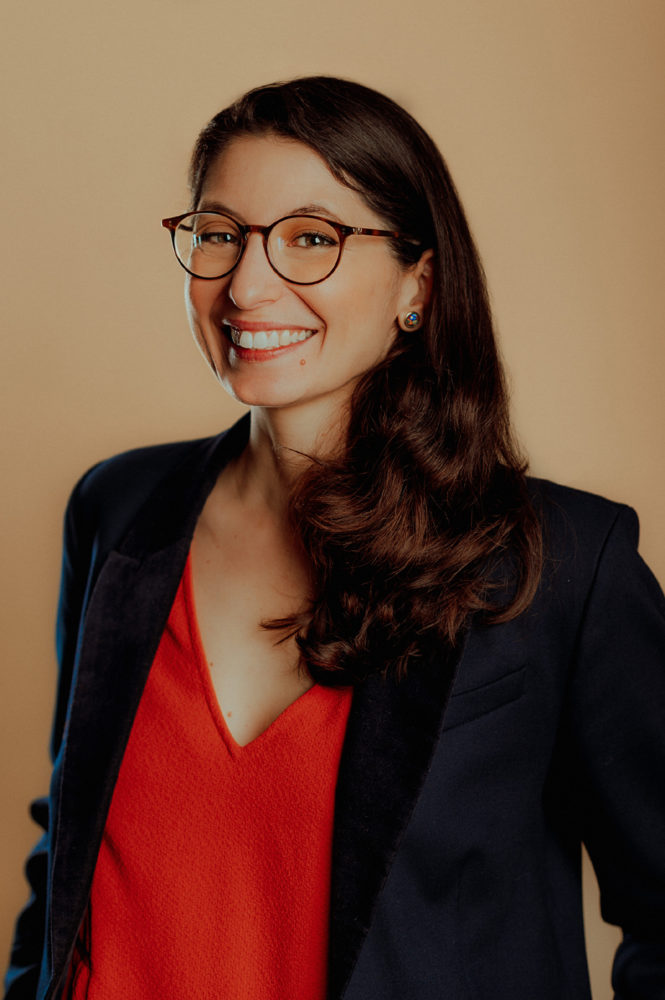
Lucie Campagnolo
Lucie Campagnolo is an independent consultant for space companies pursuing high impact ventures. NewSpace and Human Spaceflights Expert, she is passionate about reaching new frontiers and participates in several Think Tanks and knowledge groups in the field of technological development in space and terrestrial medicine.
She has spent ten years as project manager at MEDES, the Institute for Space Medicine and Physiology. Since its creation in 1989, MEDES has been striving to maintain and help develop French competence in space medicine and physiology and to promote the application of space research in the field of health. MEDES achieves this through its work in three main sectors: support in space medicine and physiology for space exploration, clinical research, and lastly e-health and support for epidemiological monitoring.
She also acted as Head of Healthcare applications at the Centre National d’Etudes Spatiales (CNES) to promote and foster innovation between the healthcare and space industrial sectors.
Prior to this, Lucie was payload ops engineer at CNES where she worked as an Experimental Manager to help scientists to prepare and conduct a broad range of experiments in microgravity, be it aboard the International Space Station, Airbus A300 Zero-G, or Ground Analogs.
Laura Cinti - The Living Dead: On the Trail of a Female
The Living Dead: On the Trail of a Female (2021)
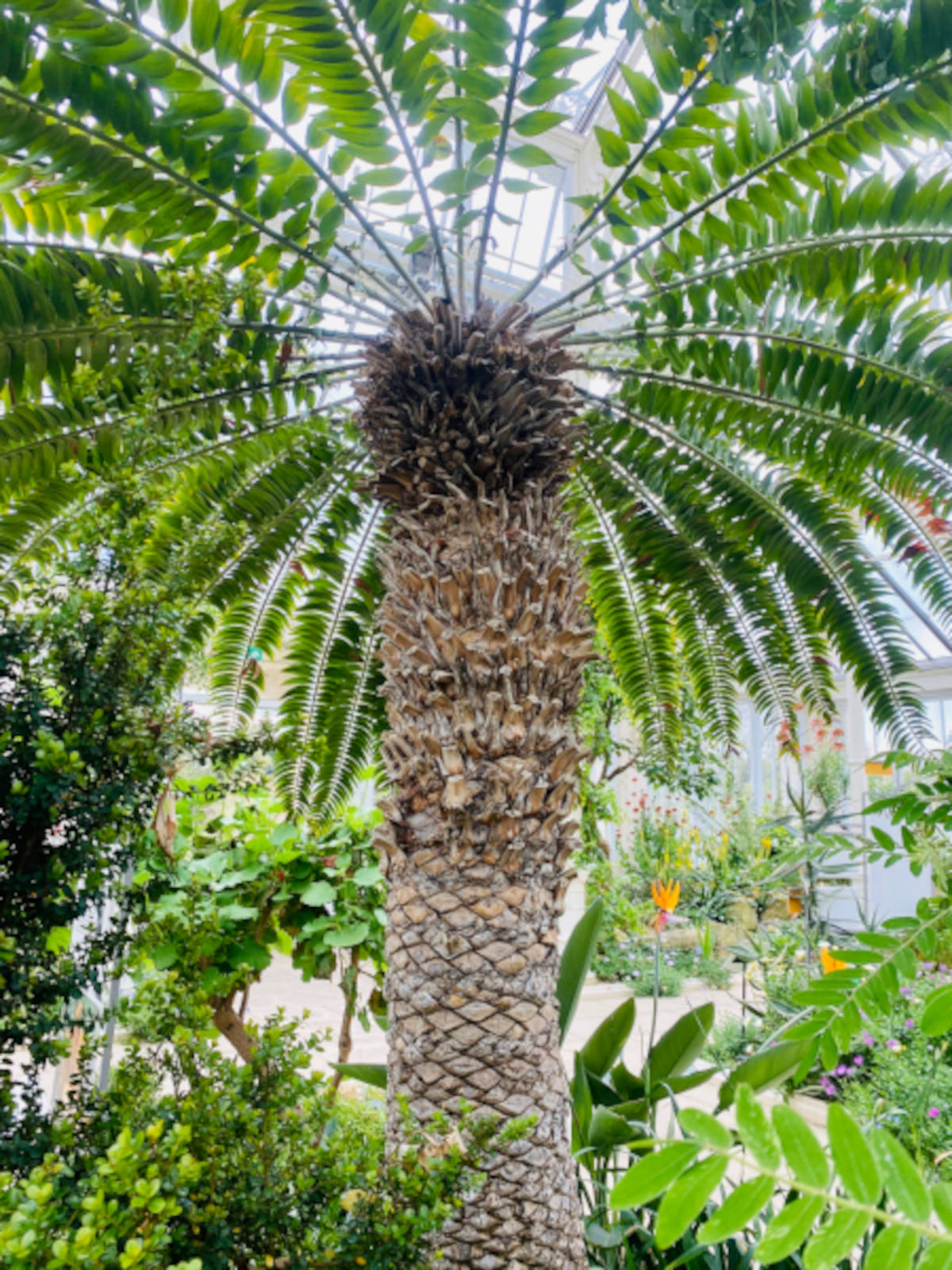
Wood’s Cycad (Encephalartos woodii), taken on 30 April 2021, sitting in the Temperate House, Royal Botanical Gardens, Kew, Photo taken by Rachel Lucas, Royal Botanical Gardens, Kew
The Living Dead: On the Trail of a Female is an artwork that draws attention to an extinct (in the wild) plant that, isolated from its habitat and unable to naturally reproduce, partakes in the global quest for the search of a female mate for one of the rarest plants in the world. It investigates narratives surrounding the plant’s documented histories, anthropological journeys and scientific approaches to locate – or create – a female partner.
It focuses on the story, perhaps a sort of love story, involving a male Wood’s Cycad (Encephalartos woodii) endemic to the Ngoye Forest of KwaZulu-Natal in South Africa – that recently went extinct in the wild. It was found in 1895 on a steep south-facing slope on the fringes of the Ngoye forest in South Africa. These are the only Encephalartos woodii plants ever found and all of them are male plants originating from one plant. Being dioecious it requires a female partner to reproduce. Unless a female specimen is found – it will never naturally reproduce again.
These trees can be found in botanical gardens around the world but they are all cloned males only able to produce the pollen-bearing male cones. Unable to reproduce and not found in the wild, to me this is an astonishing example of a ‘living dead’. One of these ‘lonely’ cloned males arrived in Royal Botanical Gardens in Kew (UK) in 1899 and it produced male cones for the first time ever in 2004 but with no female around it is unable to reproduce.This is where the artwork begins in the quest for the female.
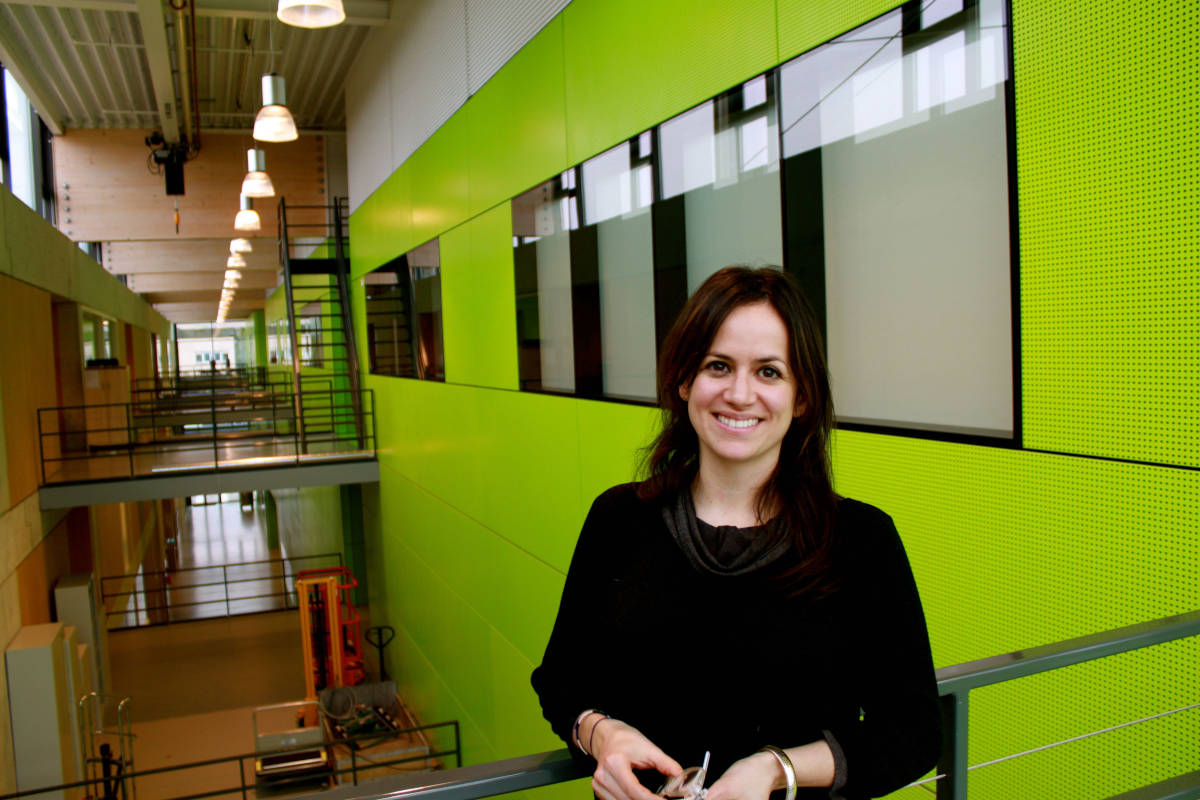
Laura Cinti is an internationally recognised research-based artist working with biology and artist and co-director of C-LAB – together with Howard Boland.
C-LAB is an award-winning bio art collective that engages with interdisciplinary use of cutting edge science, technology and art to bring life concepts on the fridges of innovation.
Their works use unconventional material and emerging technologies to create unique art experiences. C-LAB’s practice has been focused on the modification of biological matter to create living works.
Living material offers exciting ways of experiencing art and the life world. Their approach incorporates scientific methods and tools in order to manipulate living material as a way of experiencing deeper and often inaccessible spaces.
C-LAB’s works have been exhibited and presented worldwide.
Références
1. A description of the discovery of the plant by J.M. Wood
Bulletin of Miscellaneous Information (Royal Botanic Gardens, Kew), Vol. 1914, No. 7 (1914), pp. 250-251
2. Mabey, Richard. The Cabaret of Plants: Botany and the Imagination. United Kingdom, Profile, 2015,
pp. 83 – 88
3. Kew Science, Encephalartos woodii
http://powo.science.kew.org/taxon/urn:lsid:ipni.org:names:297146-1
Kim Doan Quoc - The conservation of organic life forms : sculptural and virtual gardens
The conservation of organic life forms : sculptural and virtual gardens
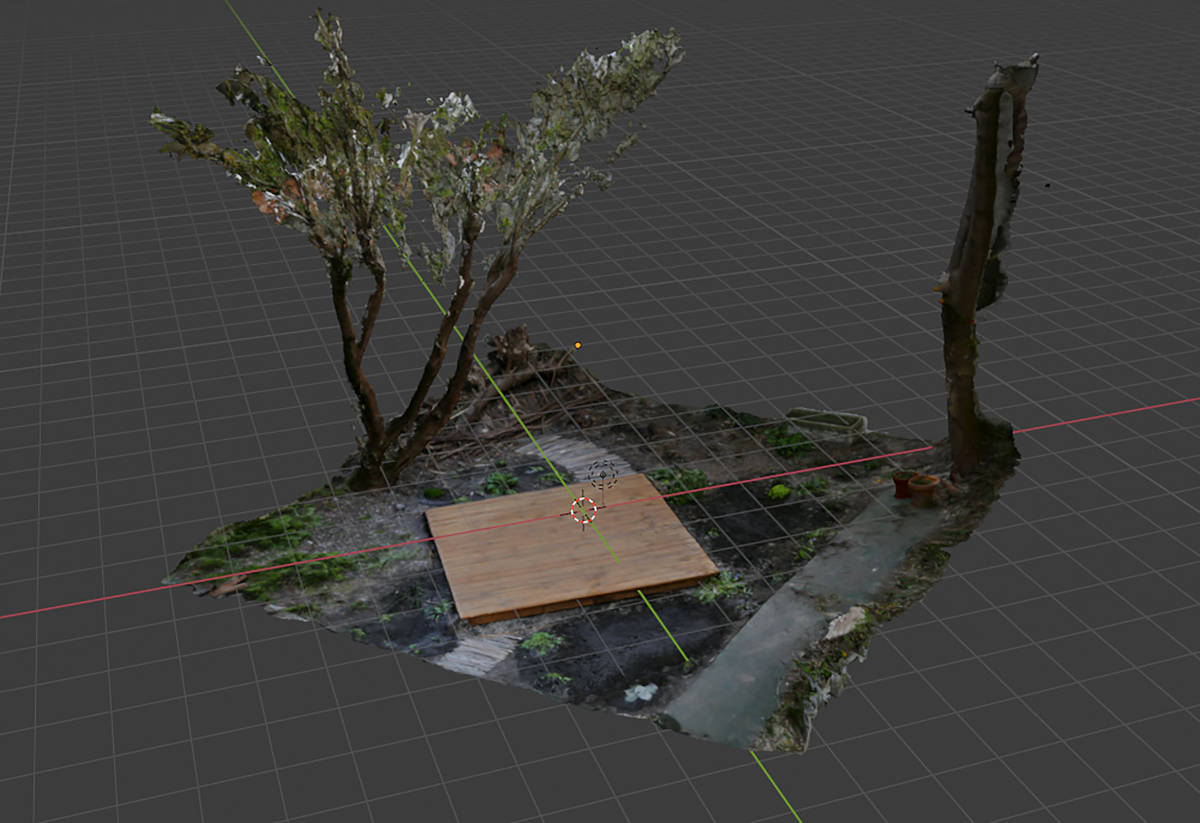
Kim Doan Quoc, Havres Gardés n.3, photogrammetry of the garden, 2021
Presentation of the series of works: Havres Gardés. Havres Gardés is a series of installations involving a garden, sculptures, videos, VR and petrified plants.
This series of works were created with the scientific support of the CBNBL (Conservatoire Botanique National de Bailleul / National Botanical Conservatory of Bailleul). Havres Gardés are immersive and interactive installations, meant as safe resting and playful spaces.
This series is an invitation for collective reflection on the garden as a domestic space and a conservation space. Starting with the notion of preservation, this series inherently has perspectives about power balance and the end of civilization. What are protecting these samples and data from and why preserving them?
.
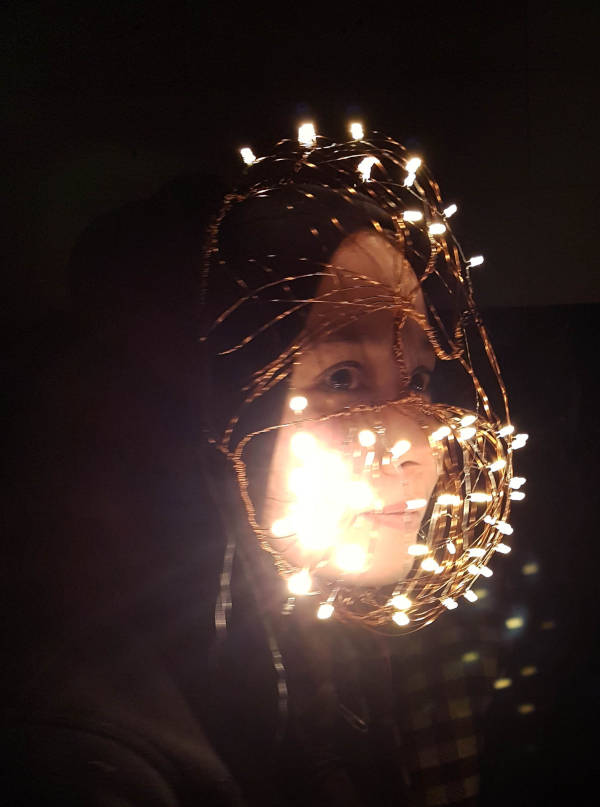
Kim Doan Quoc
Kim Doan Quoc is a multi-disciplinary artist from Lille, France, where she graduated with an MFA of visual arts in 2016.
Her work ranges from photography, video, immersive installation and projection mapping to writing and performance.
Since 2015, her work as a visual artist and a performer has been shown internationally in places like Budapest (Trafo theater), Paris (Le Wonder), Brussels (Le Nova), Mexico City (TTT 2018), Berlin (Fashion Week SS2018) and New York City (Queens Museum)…
Her body of works uses various representations of the body, gender and landscape to question the place of human beings in nature, the relationship between culture and nature.
She collaborates with other artists and, more recently, with scientists to explore these notions.
Her most recent works are immersive visual sculptural pieces that can be activated with performances. These installations are the occasion to invite other artists to perform and scientists and thinkers to give lectures, organising a multi disciplinary and collective thinking within the artwork.
Références
1 – Greengard, S. (2019), Virtual Reality, The MIT Press Essential Knowledge Series, Cambridge, MA, U.S.A., 2019. 264 pp., illus. Trade. ISBN: 978-0262537520.
2 – Eisendle H. (2009), La Mort par les Plantes, glossaire des plantes toxiques et de leur utilisation à l’usage du malfaiteur asthénique, Vies Parallèles, Bruxelles 2018. ISBN: 9782960199468.
3 – Nguyen Phan T. (2019), Monsoon Melody, Mousse Publishing, Milan-Italy 2019. ISBN: 9878867493975.
Lauranne Germond - For a Sensitive Approach to the Living
For a Sensitive Approach to the Living
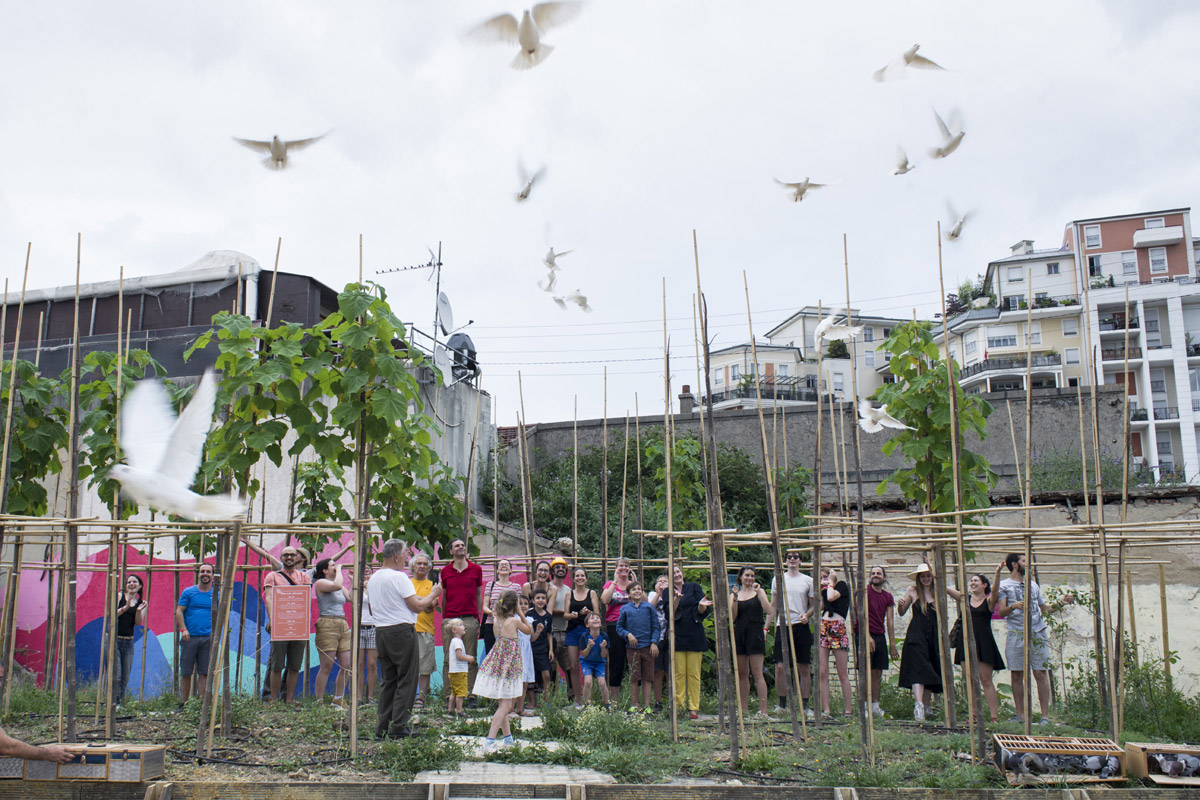
Thierry Boutonnier, Appel d’Air, la pépinière appel d’air à Vive les Groues, 2018. Photo Julie Bourges.
The unprecedented context of the massive erosion of biodiversity poses new challenges of perception, representation and understanding of the environment. How to make tangible what disappears or which has already disappeared? How can we bear witness to the complex phenomenon of the collapse of living things? How can we offer solutions that are not technical but that accompany changes in behavior? How to encourage commitment to the preservation of biodiversity by arousing emotion and wonder rather than guilt and fear? Cultural approaches have the power to share experience sensitive to ecological issues and thus contribute to a deep awareness, the only real engine of action at the individual and collective level. This is the conviction that underlies the many projects carried or supported by the association such as Appel d’Air, a project by Thierry Boutonnier attempting to create an intimate link between the inhabitants and the trees of Greater Paris, the European cooperation program « The Table and the Territory » which supports ultra local imitatives mixing culture and agriculture, the « Nature in Solidum » artistic residency program in the Haut Jura regional park or the « Nuits des Forêts » festival which tries to reconcile the multi-functionalities of the forest .
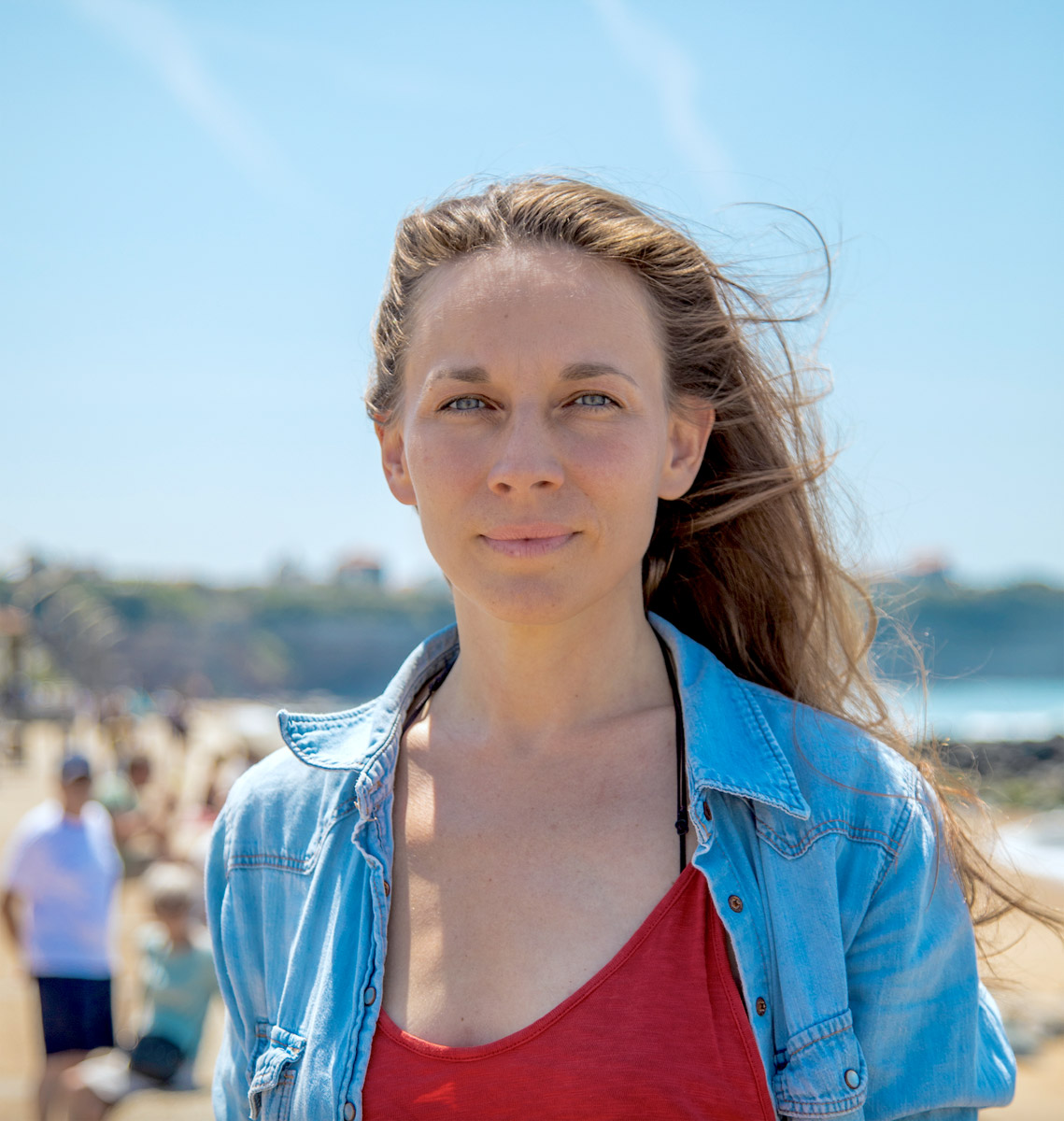
Lauranne Germond
Lauranne Germond, art historian and curator, is co-founder and director since its origin in 2008, of the COAL association, dedicated to the emergence of a new culture of ecology and nature. A graduate of the Louvre School in History of Art and Museology, she specialized in contemporary art in relation to nature and ecology. COAL is at the origin of nearly fifty contemporary art exhibitions and cultural programs around the ecological transition for important structures and public actors throughout France (UNESCO, La Villette, La Gaîté Lyrique, FIAC , Domaine de Chamarande, National Museum of Natural History, Museum of Hunting and Nature, Société du Grand Paris, Condition Publique, Banks of the Seine, CEAAC, Haut-Jura Regional Park, Sundgau Tourist Office, Office French for Biodiversity …). COAL awards the COAL Art and Environment Prize each year, and participates in the knowledge and dissemination of the theme through European cooperation, advice, and the organization of numerous workshops and conferences. COAL notably carried the Cultural Agenda of COP21 in 2015 and in 2020-21, « Vivant », a Cultural Season for Biodiversity for the IUCN World Conservation Congress. Since its creation, Lauranne Germond has been the artistic director of the Coal Art and Environment Prize and the curator of all the exhibitions and cultural programs carried by the association. In 2020 she also co-founded the festival and the association of the same name: « Les Nuits des forêts ».
projetcoal.fr
Références
1 – http://www.projetcoal.org/coal/2021/01/25/lauranne-germond-invit%c3%a9e-dans-le-dernier-num%c3%a9ro-de-lobservatoire-la-revue-des-politiques-culturelles/
2 – http://www.projetcoal.org/coal/2020/09/25/klaxon-13-%e2%80%93-agir-avec-le-vivant/
3 – http://www.projetcoal.org/coal/2020/09/12/catalogue-dexposition-courants-verts/
Loïc Le Noan - Le Paysan Urbain (The Urban Farmer)
Educational and R&D manager at Le Paysan Urbain (The Urban Farmer non-profit organisation)
Le Paysan Urbain (The Urban Farmer)
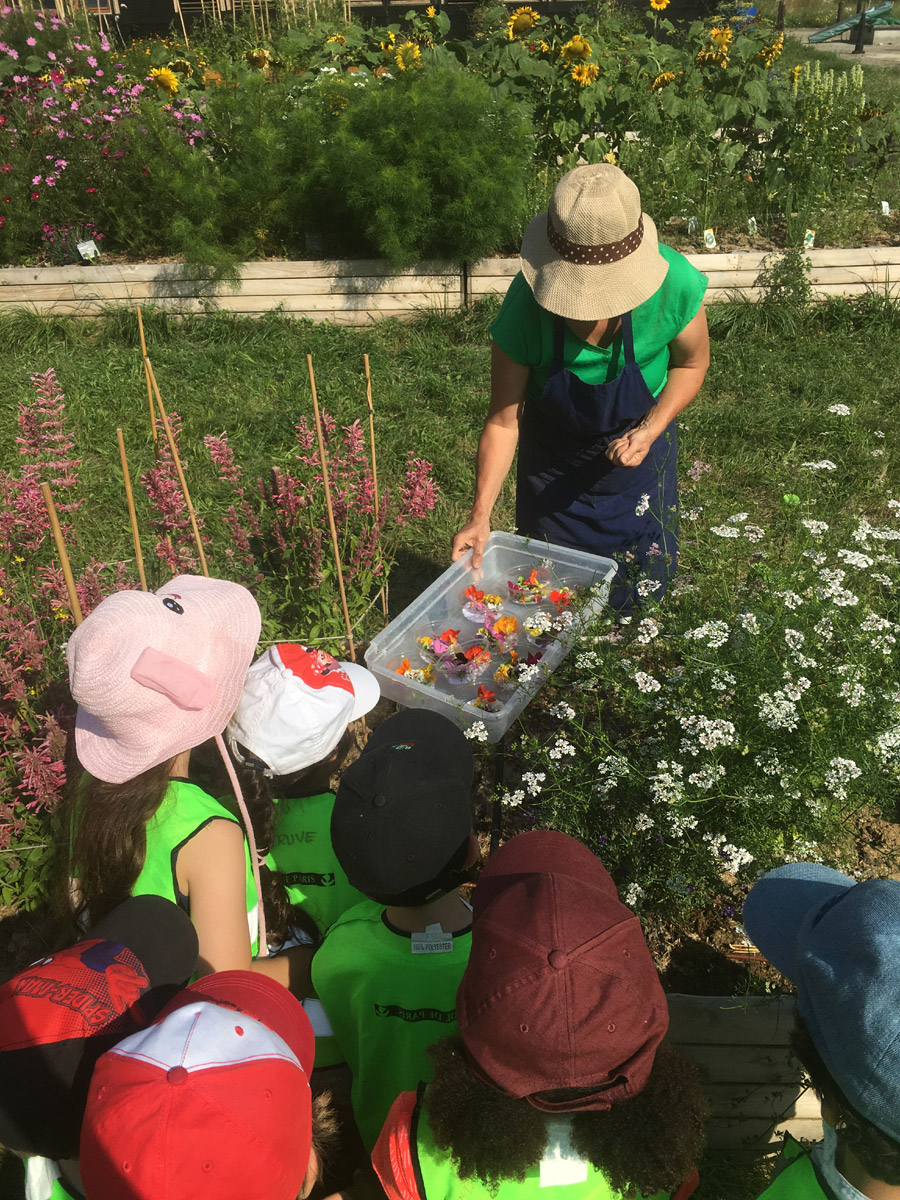
Le Paysan Urbain, Paris, 20ème arrondissement
Le Paysan Urbain is an urban agricultural structure created in 2015 developing agro-ecological, economically viable and socially responsible urban farms by being part of the social and solidarity economy.
In 2020, Le Paysan Urbain settled on a 6700m2 plot above the non-potable water reservoirs of Charonne in the 20th arrondissement. It has set up a 660m2 organic climate greenhouse in which it cultivates microgreens, around fifty tubs in which it produces herbs and edible flowers, an educational henhouse and a refuge area to accommodate wild flora and fauna.
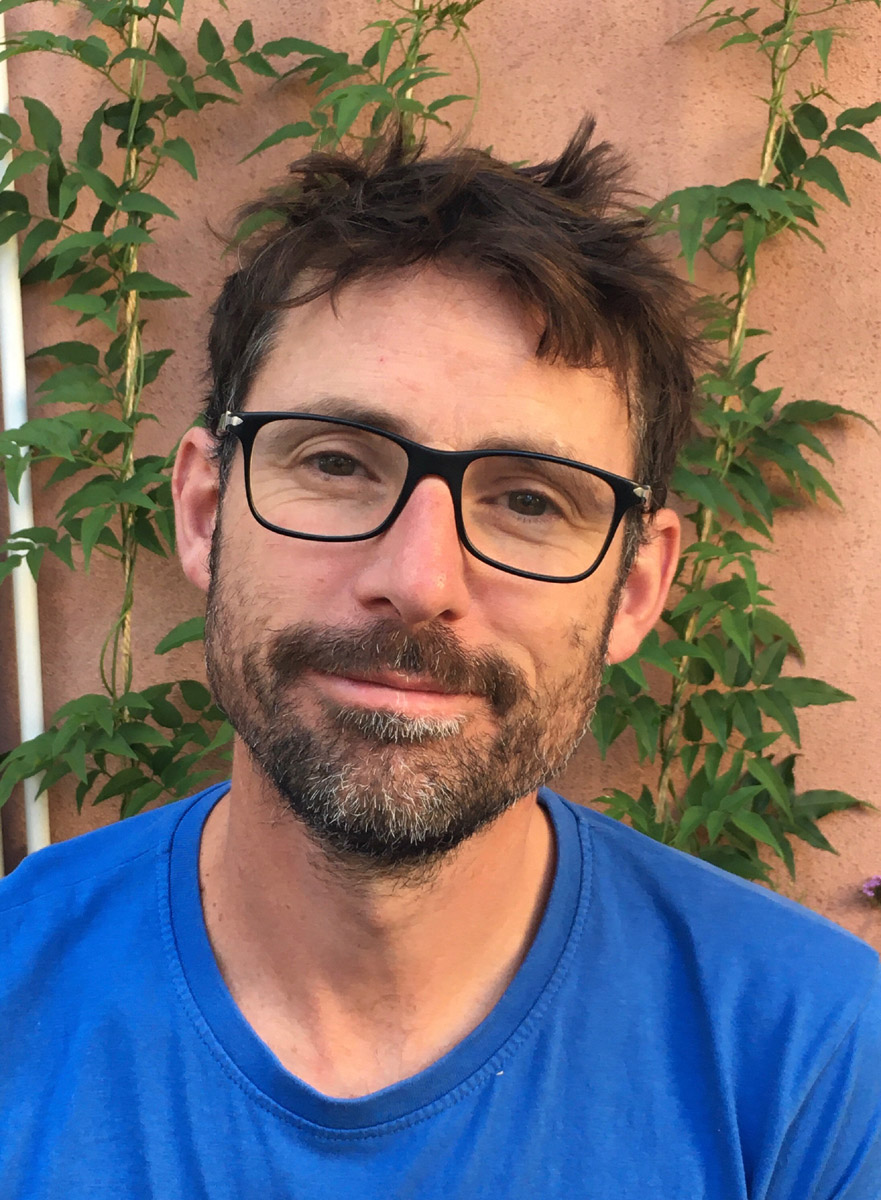
Loïc Le Noan
Inspired from an early age by his grandfather cultivating his vegetable garden with passion and having grown up in a house on the edge of the forest, Loïc Le Noan was quickly drawn to nature and agriculture. After studying ethnobotany and herbalism, he discovered a passion for environmental education. Within the Urban Ecology Agency of the City of Paris, I train young and old in organic gardening and raise awareness about the preservation of urban biodiversity.
In 2007, he co-founded « Ville en Herbes », a non-profit organisation working with social rejected people who did not have access to nature and gardening. In 2011, he joined the Education League to develop a citizen action program in the fields of agriculture and urban ecology. In 2019, he became a technical teacher in urban agriculture in a Closed Educational Center (CEF) welcoming repeat offenders minors (PJJ – Ministry of Justice). In October 2020, he joined the Urban Farmer team.
https://lepaysanurbain.fr/
Références
1 – David Streeter, C. Hart Davis, A. Hardcastle, F. Cole & L. harper, Guide Delachaux des fleurs de France et d’Europe, 2011, Ed. Delachaux et Niestlé
2 – Perrine et Charles Hervé-Gruyer, Vivre avec la terre – Manuel des jardiniers maraîchers (3 volumes), 2019, Ed. Actes sud
3 – Didier Willery, Pascal Garbe, Toutes les plantes belles et comestibles, 2021, Ed. Ulmer
Michael Marder - The Diaspora of Seed
The Diaspora of Seed
Sometimes, right on its semantic surfaces, language relieves the burden of repression that has built up over the millennia of metaphysical thought. This is the case with the word diaspora.
An obdurately entrenched popular conviction that plants are immobile is a symptom for the repression of insights—practical intuitions more than elaborate theories, to be sure—into vegetal motility. And yet, one of our main figures for the effects of human migration borrows a technical term from botanical discourse, where diaspora refers to seeds or spores, plus the plant’s anatomical structures fitted for their dispersal.
A fruit with its seeds is a diaspore, as is the white dandelion puff ball and tumbleweed rolling across wind-swept plains. Diasporic communities are the residues of human migratory flows, imagined by analogy to the movement of plants.
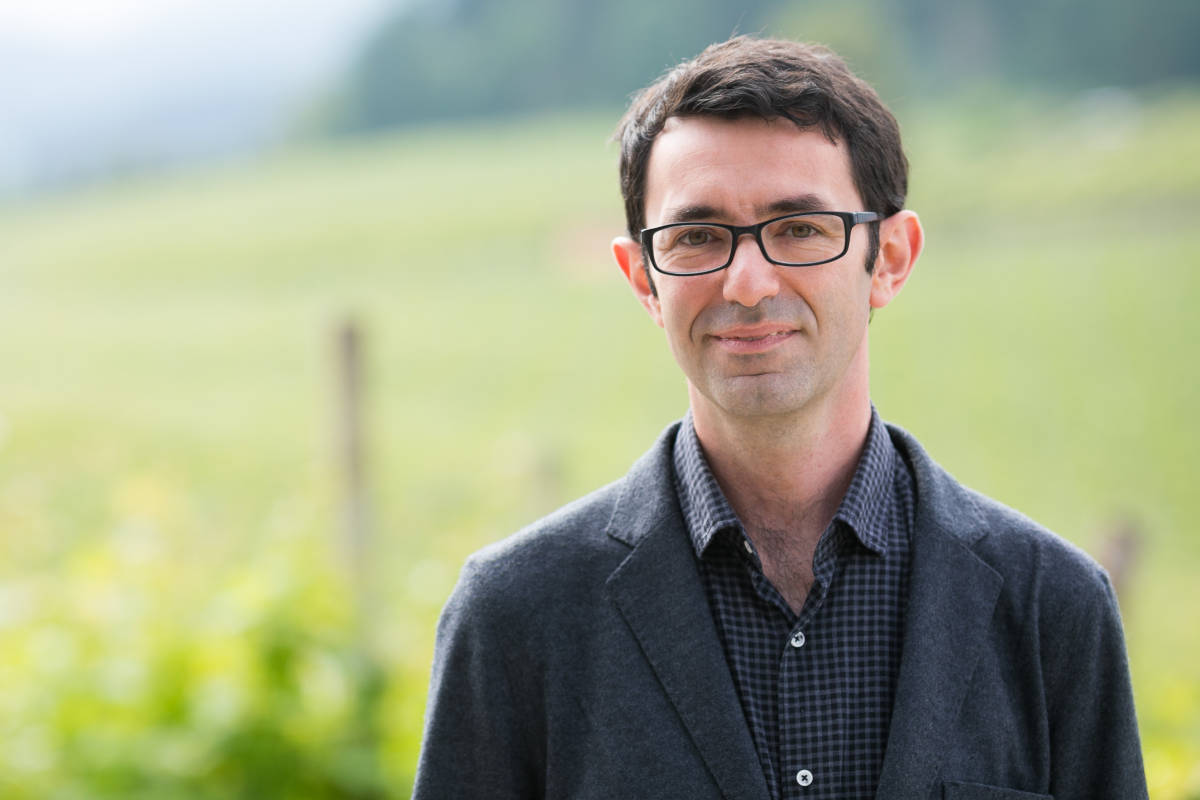
Michael Marder is IKERBASQUE Research Professor in the Department of Philosophy at the University of the Basque Country (UPV-EHU), Vitoria-Gasteiz, Spain. He holds a PhD in Philosophy from The New School for Social Research in New York.
Prior to coming to the Basque Country, he taught at universities in the United States (Georgetown, George Washington, and Duquesne Universities) and in Canada (University of Toronto & University of Saskatchewan). In addition, Marder has been a visiting professor at the University of Bristol (UK), University of Lisbon, Nova University of Lisbon, and University of Coimbra (Portugal), University of Sichuan (China), Diego Portales University (Chile), and Forum on Contemporary Theory (India).
His writings span the fields of phenomenology, political thought, and environmental philosophy. He is the author of numerous scientific articles and fifteen monographs, including Plant-Thinking: A Philosophy of Vegetal Life (2013); Phenomena—Critique—Logos: The Project of Critical Phenomenology (2014); The Philosopher’s Plant: An Intellectual Herbarium (2014); Pyropolitics: When the World Is Ablaze (2015), Dust (2016), Energy Dreams: Of Actuality (2017), Heidegger: Phenomenology, Ecology, Politics (2018), Political Categories: Thinking Beyond Concepts (2019), and Dump Philosophy: A Phenomenology of Devastation (2020) among others.
Références
1. Michael Marder, Plant-Thinking: A Philosophy of Vegetal Life (Columbia UP, 2013) [French translation: La pensée végétale – Une philosophie de la vie des plantes (Paris: Les Presses du réel, 2020)]
2. Michael Marder, The Sense of Seeds, or Seminal Events, Environmental Philosophy, April 2015, DOI: 10.5840/envirophil201542920
3. Hegel, « Plant Nature », in Hegel’s Philosophy of Nature (Oxford, 2004)
Marit Mihklepp - Mineral, Soil, Root Spaces
Mineral, Soil, Root Spaces
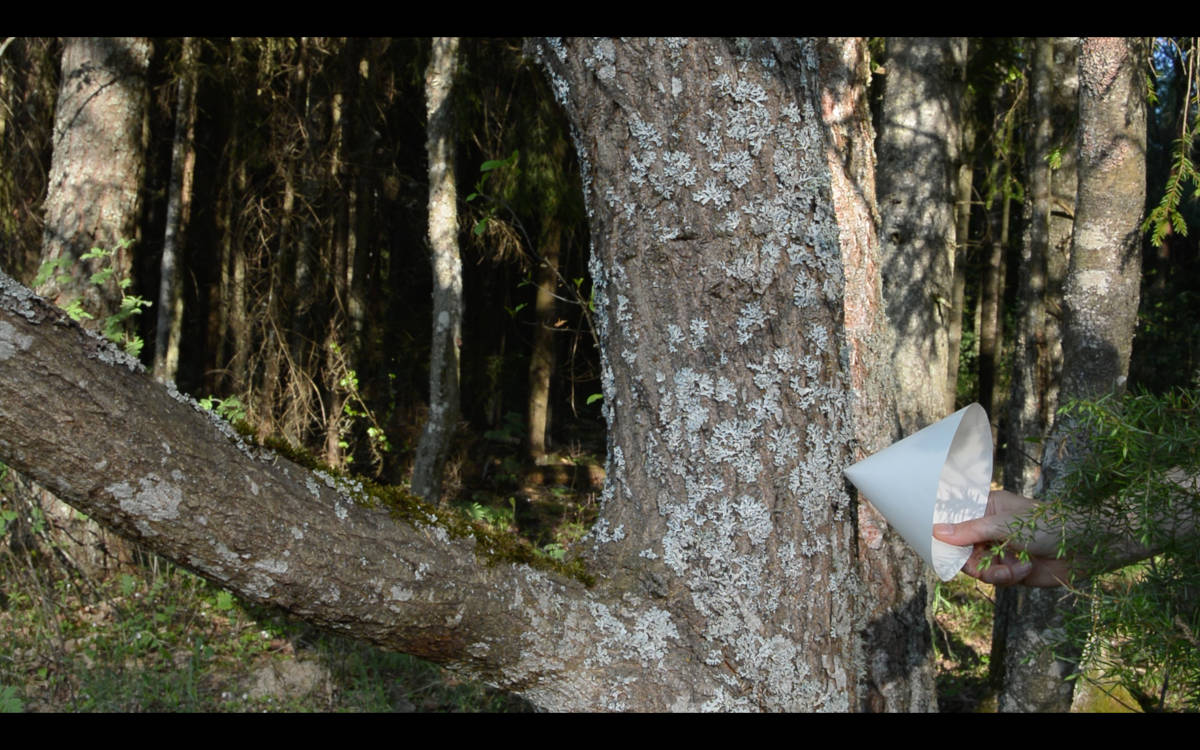
Marit Mihklepp, Tree Reader, screenshot from video, 2018 (supported by MoKS and Cultural Endowment of Estonia)
Building on my recent work around geologic time and stones, I plan to move towards the underground – often unnoticed space inhabited by countless living beings, time scales, roots, minerals.
Inspired by the writings of Maria Puig de la Bellacasa and Robert Macfarlane I wish to turn our senses into the poetics of soil ecologies, and the relational compounds we are all part of.
How to experience the slow movements of rocks and roots? How are microbes and minerals connected to plant diversity? How to think of audiences beyond the human in artistic and scientific practice?
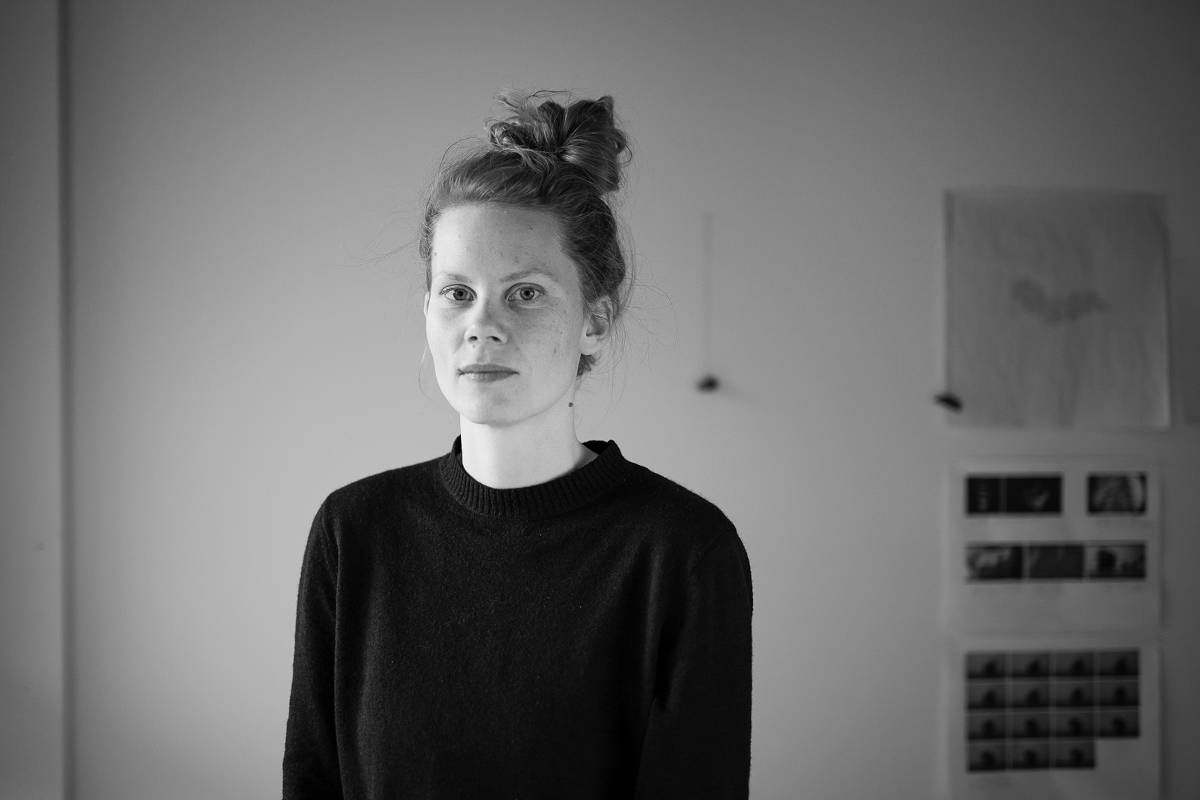
Marit Mihklepp, © ENE / Jean-Sébastien Veilleux photographer
Marit Mihklepp is an Estonian artist, currently based in The Netherlands. She holds a MA degree of ArtScience (Royal Academy of Art, The Hague) and a BA degree of Textile Design (Estonian Academy of Arts).
She focuses on the existing and speculative languages between humans and other-than-humans, and develops works in collaboration with stones, trees, bacteria and ordinary objects.
In 2021, she continues moving with geologic bodies in the collaborative research platform OTHERWISE (Switzerland), online residency Changing Landscapes (Brazil/Netherlands) and research residency Black Earth at Valley of the Possible (Chile). She is the recipient of the Roots and Seeds XXI Maison Malina Residency.
Références
1 – Sylacauga/Hodges meteorite (an extremely rare case of a meteorite landing on a human being)
2 – Lake Superior by Lorine Niedecker (poem)
3 – Eyes of the Skin by Juhani Pallasmaa (book)
4 – Underland by Robert Macfarlane (book)
Sophie Nadot - The Potential of Ordinary Plants in Urban Ecosystems
Botanist specialised in flower evolution and pollination, professor at University Paris-Saclay
The potential of ordinary plants in urban ecosystems
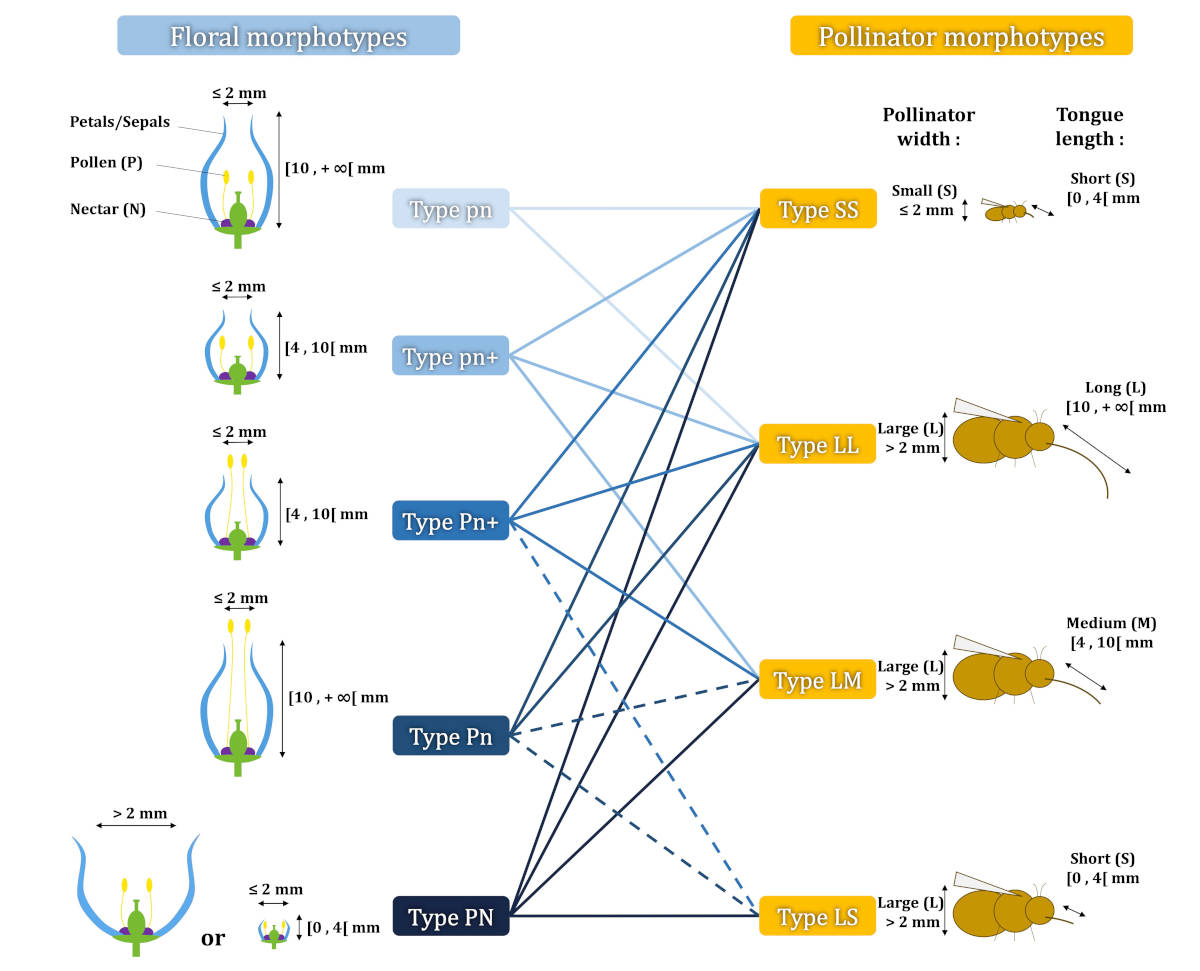
Classification of floral and pollinator morphotypes. Full lines between floral and pollinator morphotypes indicate that the pollinators can potentially access both pollen and nectar (except nectar robbing). Dashed lines indicate that the pollinators can potentially access only pollen. The drawings represent morphotypes that can belong to any of the five insect orders that include floral visitors (Hymenoptera, Diptera, Coleoptera, Lepidoptera, and Heteroptera)
When it comes to biodiversity, much attention is usually paid to natural ecosystems, particularly to ecosystems that are highly impacted by global changes, such as the spectacular tropical rain forests, or wetlands, which are threatened in many temperate countries including France.
Urban biodiversity has become to attract attention relatively recently and is now the object of various research projects or actions, including citizen science programs.
This talk will focus on two aspects of my work, research and mediation. In the first part I will present the main results of a research project that I have supervised, on how urbanization (in the Paris regions) may affect the reproductive characteristics and ecological affinities of street plant communities.
In the second part, I will present an online course that we conceived and produced together with the association Tela Botanica, the MOOC Herbes Folles. This MOOC (massive open online course) aims to educate a wide audience about the diversity of weeds, in order to show their ecological specificity and highlight their interest as part of the unfairly neglected biodiversity.
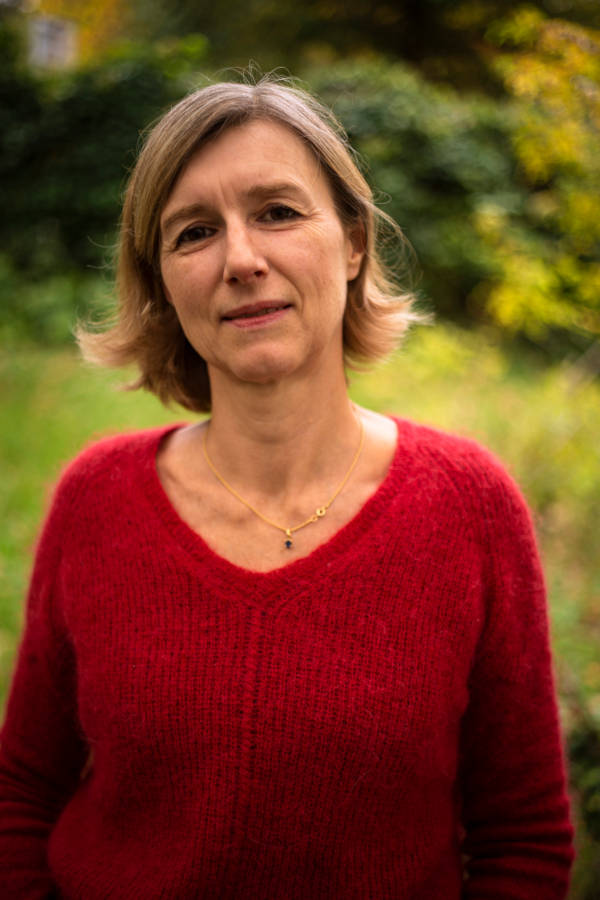
Sophie Nadot is a professor at Université Paris-Saclay where she teaches botany and coordinates a master program on ecological landscape management.
Her research focuses on the evolution of flowering plants. She has worked on the evolution of pollen morphology in relation with pollen early development. She is particularly interested in flower evolution.
Floral symmetry is one of the traits that she is interested in, along with other features. She has a special interest in the buttercup family, which displays an extraordinary variation in floral traits. She is also interested in how urbanisation may affect plant and pollinator communities.
https://www.ese.universite-paris-saclay.fr/personnel/sophie-nadot/
Références
1 – Sauvages de ma rue
https://www.vigienature.fr/fr/flore/sauvages-de-ma-rue
2 – MOOC Tela Botanica
https://mooc.tela-botanica.org/
3 – Eric Lenoir, Petit traité du jardin punk – apprendre à désapprendre, Terre vivante, 2018
Cyrille Prestianni - A Chronicle of the Greening of Earth: how the plants have shaped our environments.
Paleobotanist, Evolution and Diversity Dynamics Laboratory (EDDy Lab), Geology Department, Liège University, Liège, Belgium ; OD Terres et Histoire de la Vie, Royal Belgian Institute of Natural Sciences, Bruxelles, Belgium
A Chronicle of the Greening of Earth
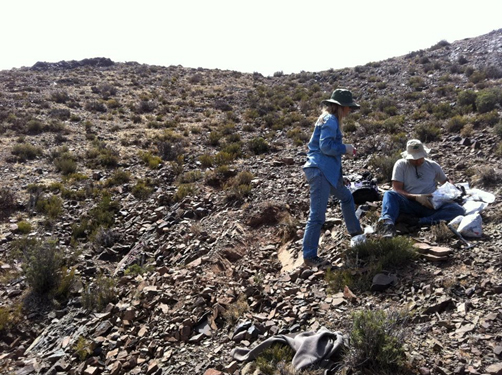
Campagne de collecte de fossiles dans le Tournaisien d'Argentine avec l'équipe du CICTERRA de l'Université de Cordoba.
The planet earth was not always as welcoming as it is today. If life is old, it was for the biggest part of our planet’s history confined to the aquatic realm. From the primitive barren environment dominated by the reddish colours of oxidated rocks to the green and blue planet we know today it is the plants that have shaped the environments. The terrestrialization process is the colonization of the land habitat by plants and animals during the Palaeozoic era (541-241 Ma). It led to an enormous radiation of living forms and is regarded accordingly as one of the most important events in the history of life. Profound changes occurred in the bio/geosphere and completely transformed continental ecosystems. Most modern clades including major land plant lineages had emerged by the end of the Devonian (359 Ma). The Devonian continental colonization and diversification event can be considered as important as the Cambrian oceanic diversification event. During this period, plants undergone their most important architectural evolution. They evolved from a tiny herbaceous habit to the emergence of the first modern looking forests. This evolution led to climatic changes opposite to the present-day changes. The end of the Devonian is also characterized by one of the most important mass extinctions.
During this talk we are thus going to briefly explore the main steps that have made of earth the planet that we know today. We are going to see how plants were able to adapt to the aerial environments and were subsequently able to conquer even the driest part of our planet. But we are also going to discuss the environmental consequences of these changes that notably led to one of the biggest major diversity crises.
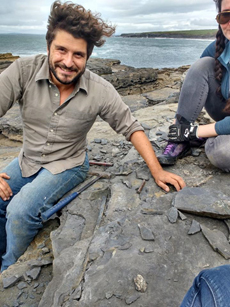
Cyrille Prestianni
Cyrille Prestianni is researcher at the Royal Belgian Institute of Natural Sciences in Brussels and lecturer at the University of Liège (Belgium). He is a paleobotanist and his research mainly focuses on the evolution of plants during the Devonian and the Carboniferous periods. He is interested in the understanding of the terrestrialisation process of plants as well as the consequences of this process at a larger scale. He is the president of the scientific association Agora Paleobotanica and editor of the international scientific journal Comptes Rendus Palevol. He is actively collaborating with several researcher worldwide but mainly in South Africa and Argentina. In addition to its scientific career, Cyrille Prestianni is a figure of the fight for social rights in Belgium and against homophobia as president of several associations such as Arc-en-Ciel Wallonie.
Références
1 – Taylor, T.N., Taylor, E.L. & Krings, M. (2009) Palaeobotany, the biology and evolution of fossil plants, ed. 2. Academic Press, Elsevier, Burlington, MA.
2 – Niklas KJ . (2016). Plant evolution: an introduction to the history of life. Chicago: University of Chicago Press.
3 – Hallé F. (1999). Éloge de la plante : pour une nouvelle biologie, Le Seuil.
Meredith Root-Bernstein - With What Methods Can We Understand Landscapes?
Ethnobiologist, ecologist, conservation scientist, CNRS researcher at the Muséum National d’Histoire Naturelle, Paris
With What Methods Can We Understand Landscapes?
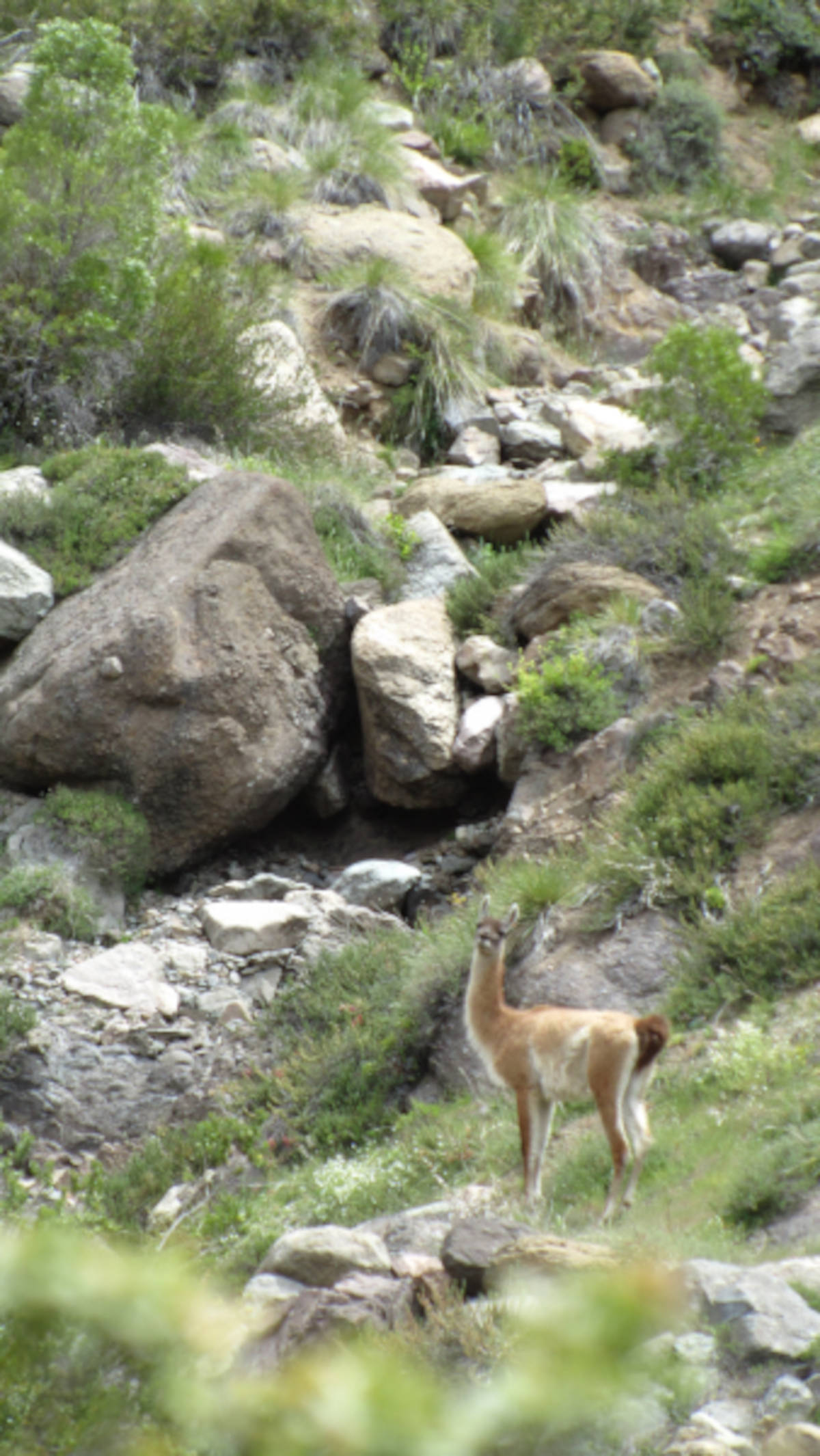
Guanaco (wild llama) in Central Chile
Landscapes are both pragmatically the scale at which my research takes place, and an interesting theoretical concept. I describe first how I understand the composition and transformation of landscapes. Then I describe what kinds of methods I use to understand landscapes. Starting from my position that art and science are just different kinds of methods, I further ask what kinds of methods are implicated in landscape making and how those are related to art and ecological science.
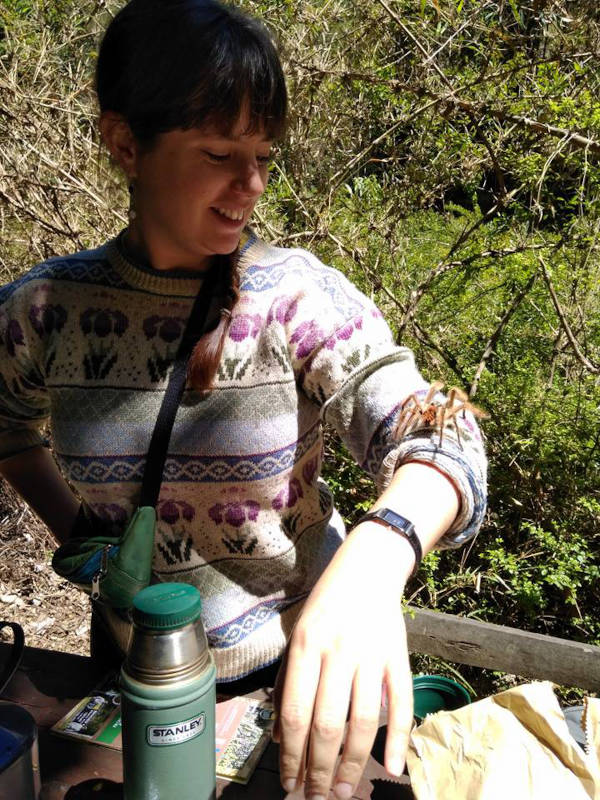
Meredith Root-Bernstein, with tarantula
Meredith Root-Bernstein is an ethnobiologist, ecologist, and interdisciplinary conservation scientist. She is a CNRS researcher at the Muséum National d’Histoire Naturelle since 2020.
Meredith works on ecosystem succession (transformation), degradation, restoration and rewilding. She works mainly in Chile, where she did her PhD, and where she co-founded the NGO Kintu for rewilding the guanaco (wild llama) (Lama guanaco) in central Chile.
She has also participated in field collaborations in Italy (the Po Delta), Lesotho, and soon in Sudan. She also researches animal behavior from time to time and teaches « Human-animal interaction » for the masters in GEODesign at Eindhoven Design Academy.
In addition, Meredith has had a long-standing interest in environmental art. Most notably, she collaborated with artist Cecilia Vicuña, and participated in the Fondazione Zegna/ Cittadellarte-Fondazione Pistoletto/ Unidee art residency « Expanded body #2_ Inhabiting Time » in 2018, after which she continued to collaborate with several of the other invited artists. In 2019-2020 she did a diploma in Art Research and Experimentation.
https://tsoeg.org/associates/meredith-root-bernstein/
https://cesco.mnhn.fr/fr/annuaire/meredith-root-bernstein-6406
Références
1 – Root-Bernstein, M. 2020. L’ange Gabriel dans la forêt du centre du Chili, Special Issue “Forêt et paysage”, Projets de Paysage, 22.
2 – Root-Bernstein, M., & Ladle, R. 2019. Ecology of a Widespread Large Omnivore, Homo sapiens, and its Impacts on Ecosystem Processes. Ecology and Evolution, 9(19), 10874-10894.
3 – Root-Bernstein, M., Valenzuela, R., Huerta M., Armesto, J., Jaksic, F. 2017. Acacia caven nurses endemic sclerophyllous trees along a successional pathway from silvopastoral savanna to forest. Ecosphere 8(2).
Marc-André Selosse - Plant nature is dynamic
Professor at the Muséum d’Histoire Naturelle, Paris
Plant nature is dynamic
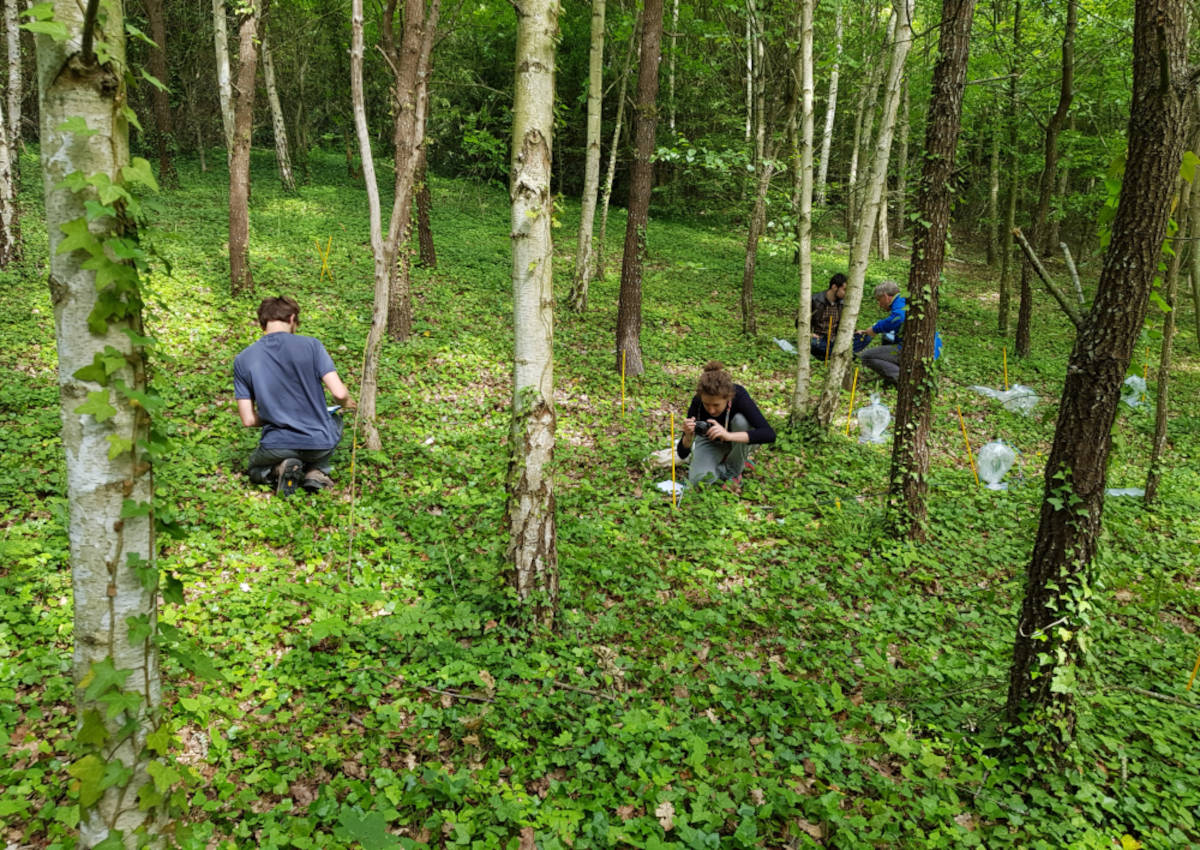
Field work in team
The plant is an evolutionary dynamic and for it there is no permanence, no ideal adaptation, no state of reference.
Interactions with the other species which surround it, parasites or mutualists, impose a perpetual evolution on it: it is subjected to the race of the Red Queen and, in this, it is an organism like any other. But we often find it hard to imagine that it evolved before us, sometimes with us, if not even… after us.
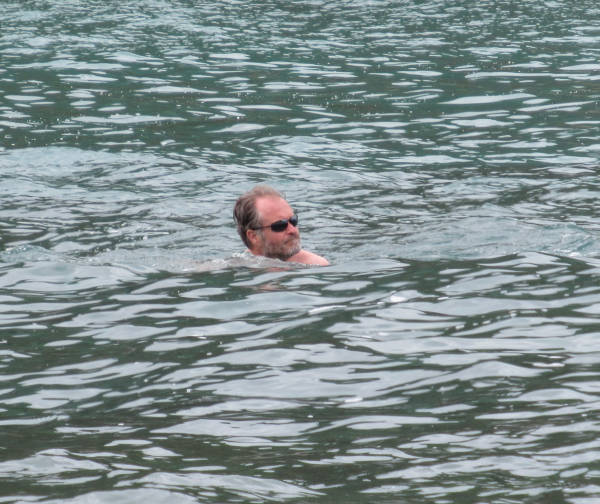
Marc-André Selosse
Marc-André Selosse is professor at the National Museum of Natural History in Paris and professor at the universities of Gdansk (Poland) and Kunming (China).
His research focuses on the ecology and evolution of mutually beneficial associations (symbioses). Mycologist and botanist, he works in particular on the mycorrhizal symbioses which unite soil fungi to the roots of plants.
Former President of the Botanical Society of France, President of BioGée and member of the French Academy of Agriculture, he is editor of four international scientific journals and of Espèce a journal of vulgarisation.
He has published more than 190 research articles and 190 popularization articles, downloadable from http://isyeb.mnhn.fr/fr/annuaire/marc-andre-selosse-404. About a hundred different videos are also available on YouTube. He has published books for the general public on microbiota (Jamais Seul, 2017) and tannins (Les tastes et les couleurs du monde, 2019) at Actes Sud. In March 2021, he published a comic strip about the soil with Mathieu Burniat (Sous Terre, Dargaud).
Références
1 – M.-A. SELOSSE, 2017. Jamais seul. Ces microbes qui construisent les plantes, les animaux et les civilisations. Actes Sud.
2 – M.-A. SELOSSE, 2019. Les goûts et les couleurs du monde. Une histoire naturelle des tannins, de l’écologie à la santé. Actes Sud.
3 – M.-A. SELOSSE, 2021. L’origine du monde. Une histoire naturelle du sol à l’attention de ceux qui le piétinent. Actes Sud.
Anaïs Tondeur - Companion Plant, Guide Plant (Plante compagne, Plante Guide)
Plant companion, Plant guide
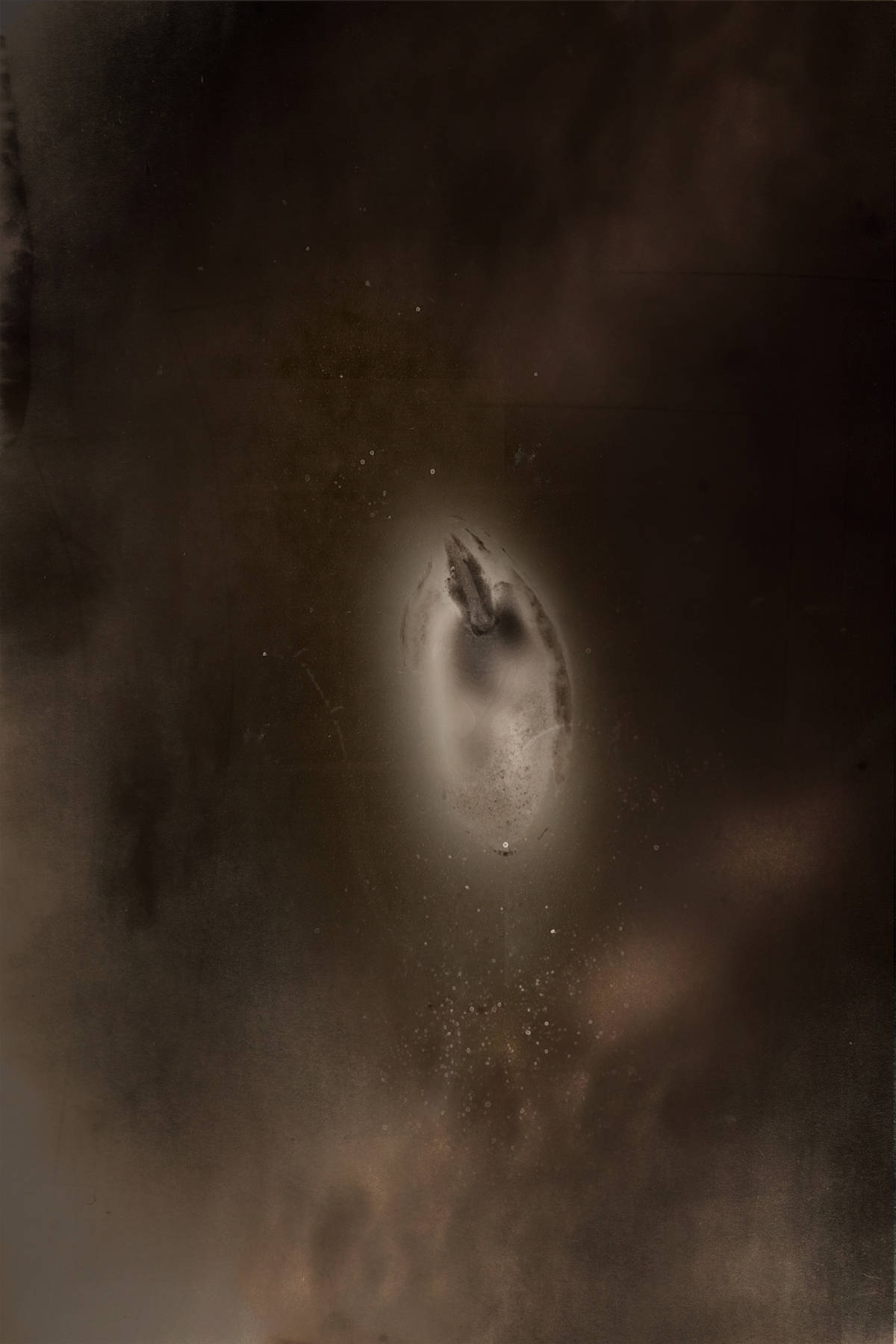
Anaïs Tondeur, Seed of Linum usitatissimum, Exclusion Zone, Chernobyl, Radiation level: 1.7 µSv/h
From the human breaths to the plants’ breath, we will delve in the meshwork which interlaces our existences to the vegetal lives, exploring ways plants can guide us to other modes of being to the world.
Stemming from the process of creation of Chernobyl Herbarium, a series of rayograms for which I gather at the surfaces of photosensitive plates the imprint of the body of plants growing in the radioactive soils of the Exclusion zone, I propose to reflect on the notion of exposure, permeability and adaptability.
In letting ourselves be guided by accomplice beings, we will explore means plants can open ways in mending the broken threads between our lives and the cycles of the biosphere.
Through this endeavour, assumed as political, I will share my explorations directed towards the elaboration of an ethics rooted in the material and symbolic continuities between human existence and that of the living world.
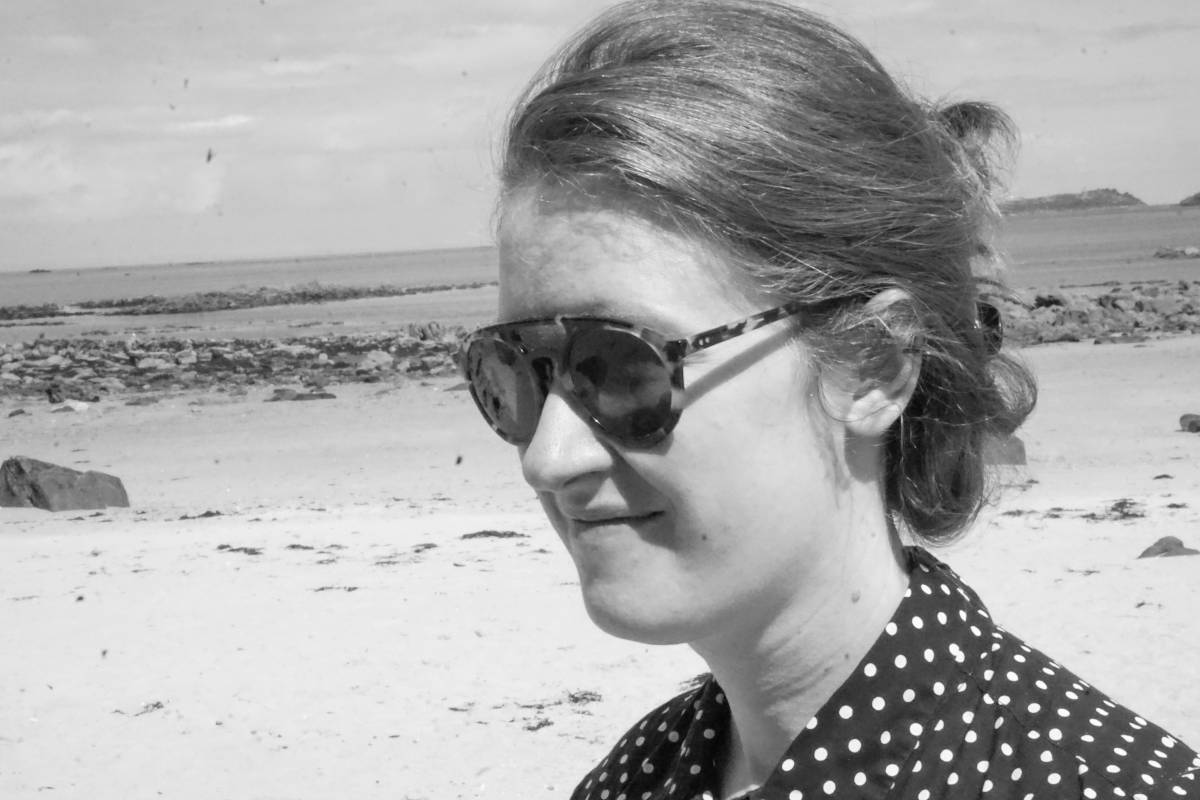
Anaïs Tondeur, image © Patricio Retamal
Anaïs Tondeur is a French visual artist based in Paris. She creates speculative narratives and investigations through which she experiments other conditions of being to the world and other modes of cohabitation with the other-than-humans: plants, rocks, air, water. Here, she searches for a renewal of our modes of perception, and explores, beyond the separation of nature and culture, ways to disrupt the grand narrative of the Anthropocene.
Collaborating with geologists, oceanographers, physicists, philosophers, and anthropologists, her protocols of research took her in expeditions on the traces of particles of black carbon with scientists, through Chernobyl Exclusion Zone, across the Atlantic Ocean or along major frontiers between tectonic plates.
Graduate from Central Saint Martin (2008) and Royal College of Arts (2010) in London, she was awarded Ars Electronica Cyber Arts Honorable Mention (2019). She has presented and exhibited her work in international institutions such as the Centre Pompidou (Paris), La Gaîté Lyrique (Paris), MEP (Paris), Frac Provence-Alpes-Côte d’Azur, Serpentines Galleries (London), Bozar (Brussels), Biennale Di Venezia, Pavillon French, (Lieux Infinis), Houston Center of Photography (United States) or the Nam June Paik Art Center (Seoul).
Références
1 – Lieutaghi Pierre, La plante compagne: pratique et imaginaire de la flore sauvage en Europe occidentale, Arles, Actes Sud 1998 (première édition 1991)
2 – Marder Michael, Tondeur Anaïs, The Chernobyl Herbarium: Fragments of an Exploded Consciousness, 2016
Link to download pdf : http://www.openhumanitiespress.org/books/titles/the-chernobyl-herbarium/
3 – Dhôtel André, Le grand rêve des floraisons, Klincksieck, De Natura Rerum, 2018
Inspirations
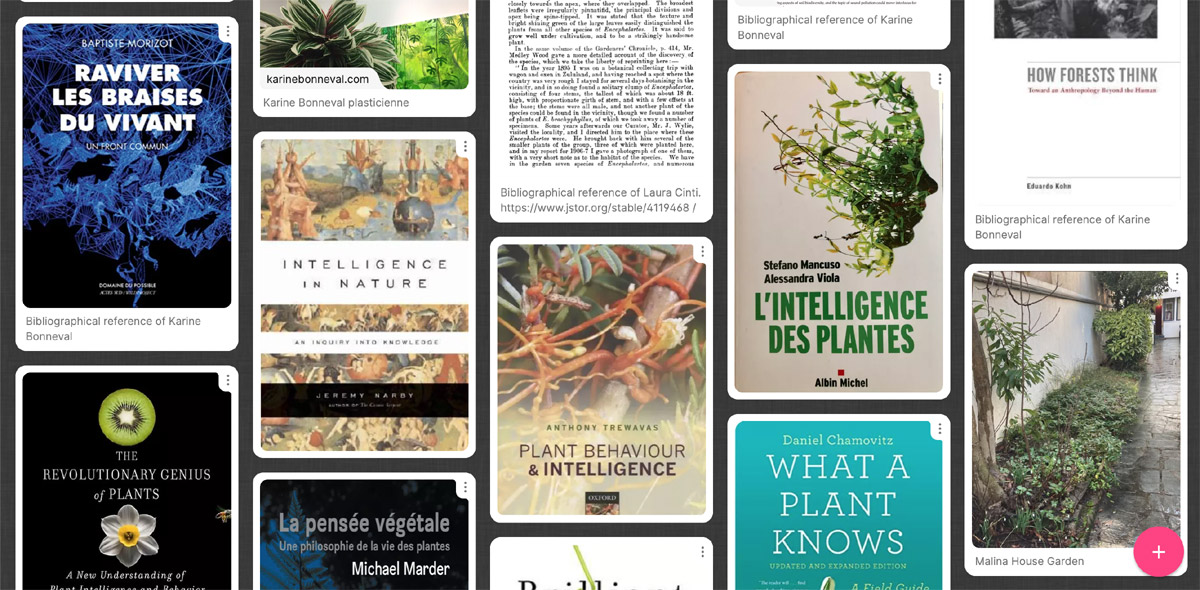
We asked the participants to the workshop to provide inspirational references. Discover and enjoy.
Podcasts
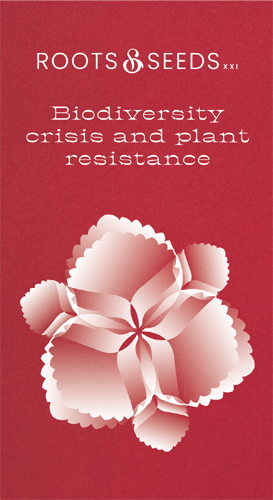
A card game for 24 podcasts.
Gallery
Fieldwork and exchanges in a tiny suburban parisian garden
For Cartography of a Garden, we replayed the 19th century expeditions but with the knowledge and approaches of the 21st. The tiny private garden has been scrutinized by all sorts of people: some botanists, a paleobotanist, visual and sound artists, curators, an urban farmer, a consultant for space companies, a mycologist, and may be more.
Select and drag pictures to re-organise them as you please.
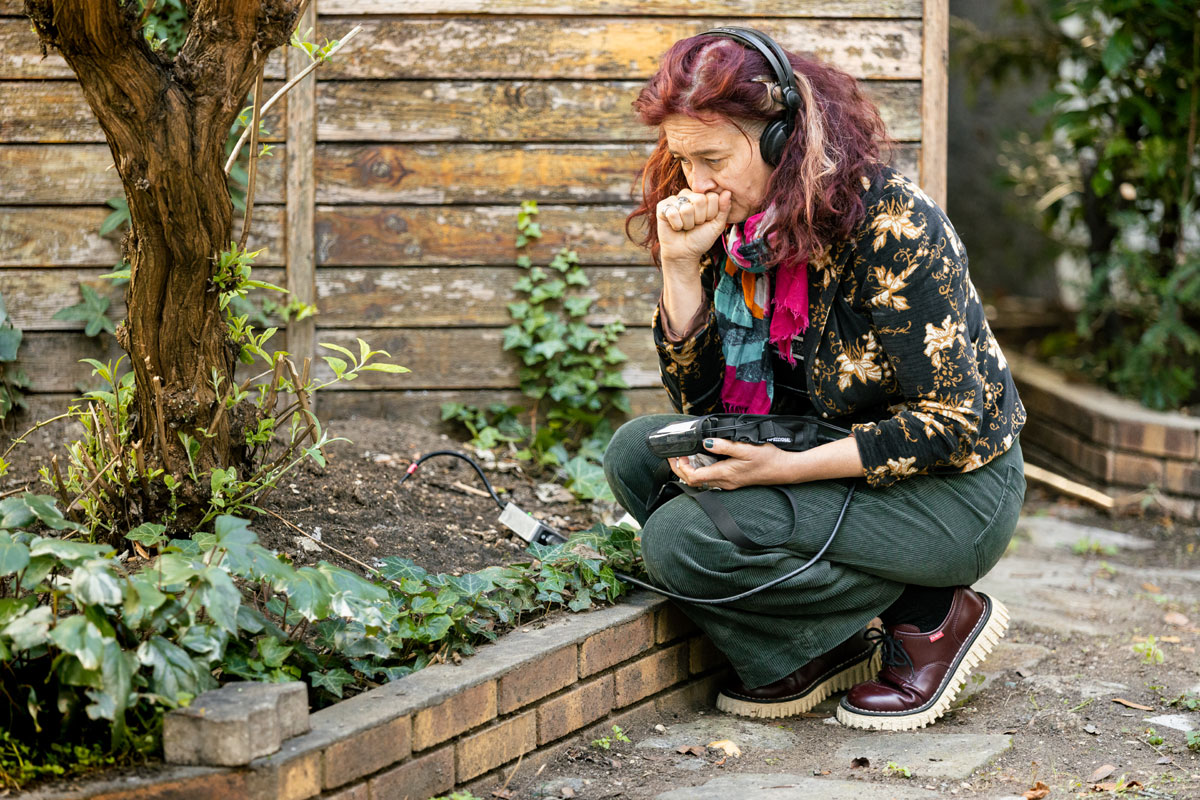
Karine Bonneval, field recording, listening to the earth - Image Quentin Chevrier
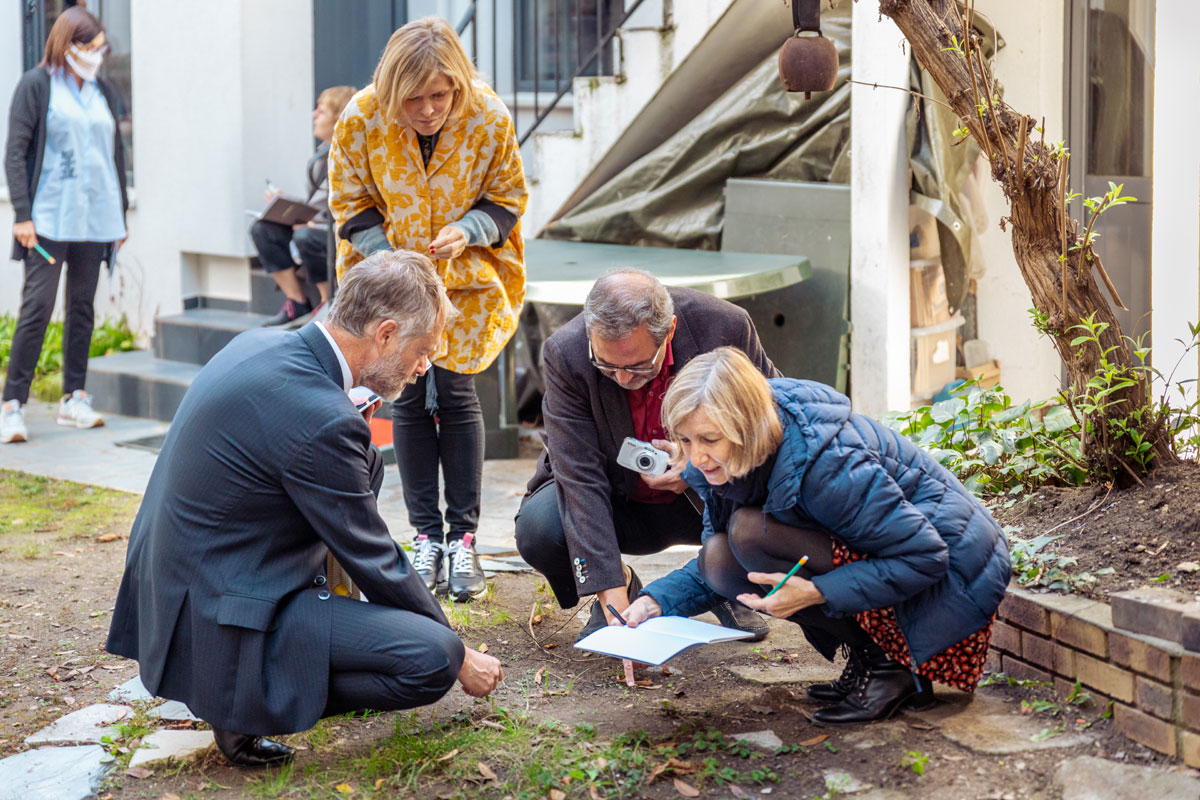
Field work, There surely is something important here - Image Quentin Chevrier
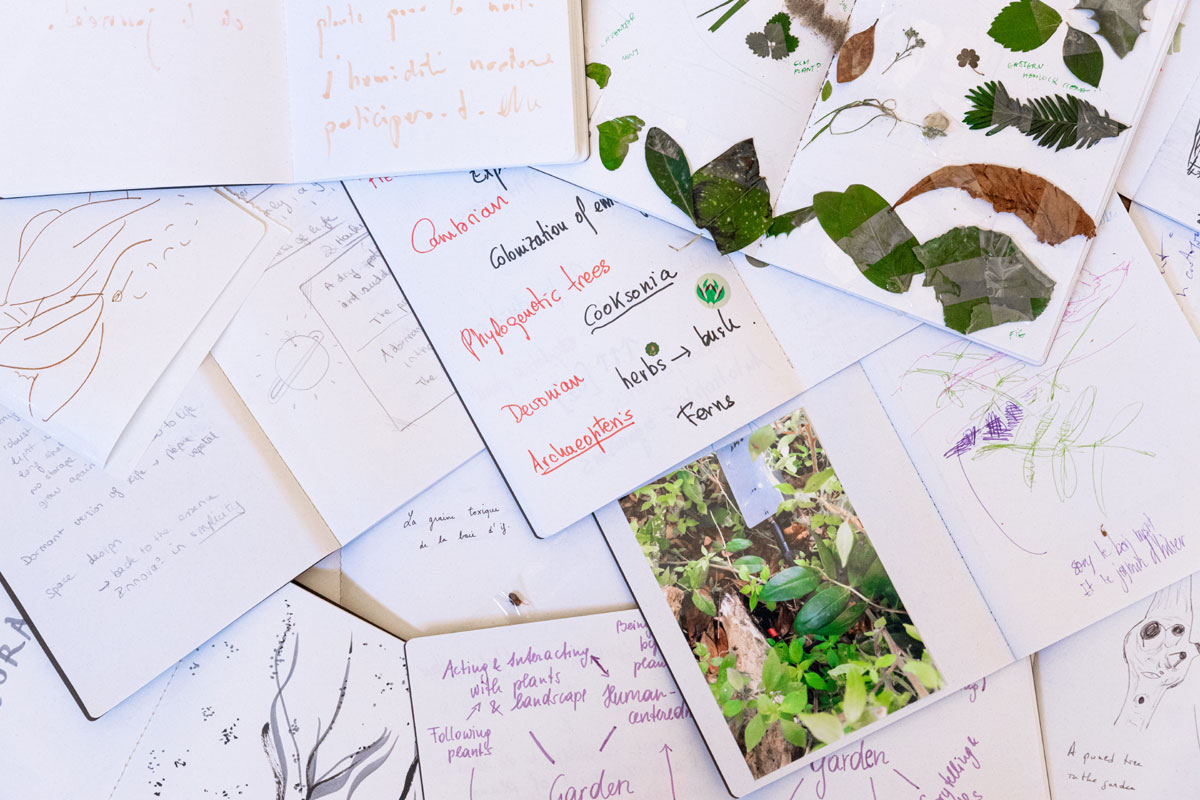
Field work, collected material - Image Quentin Chevrier
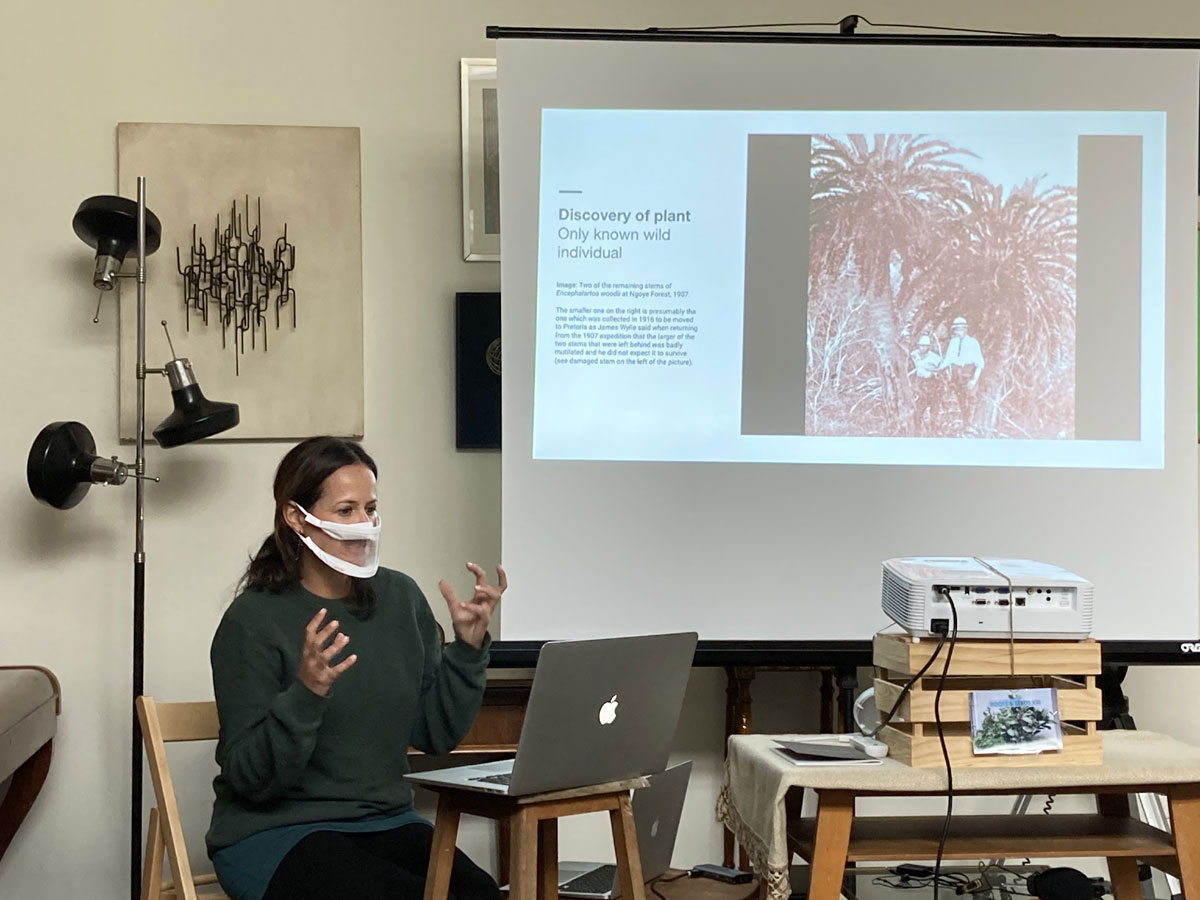
Laura Cinti, recipient of one of the Roots and Seeds production award, presents her project - Image Annick Bureaud
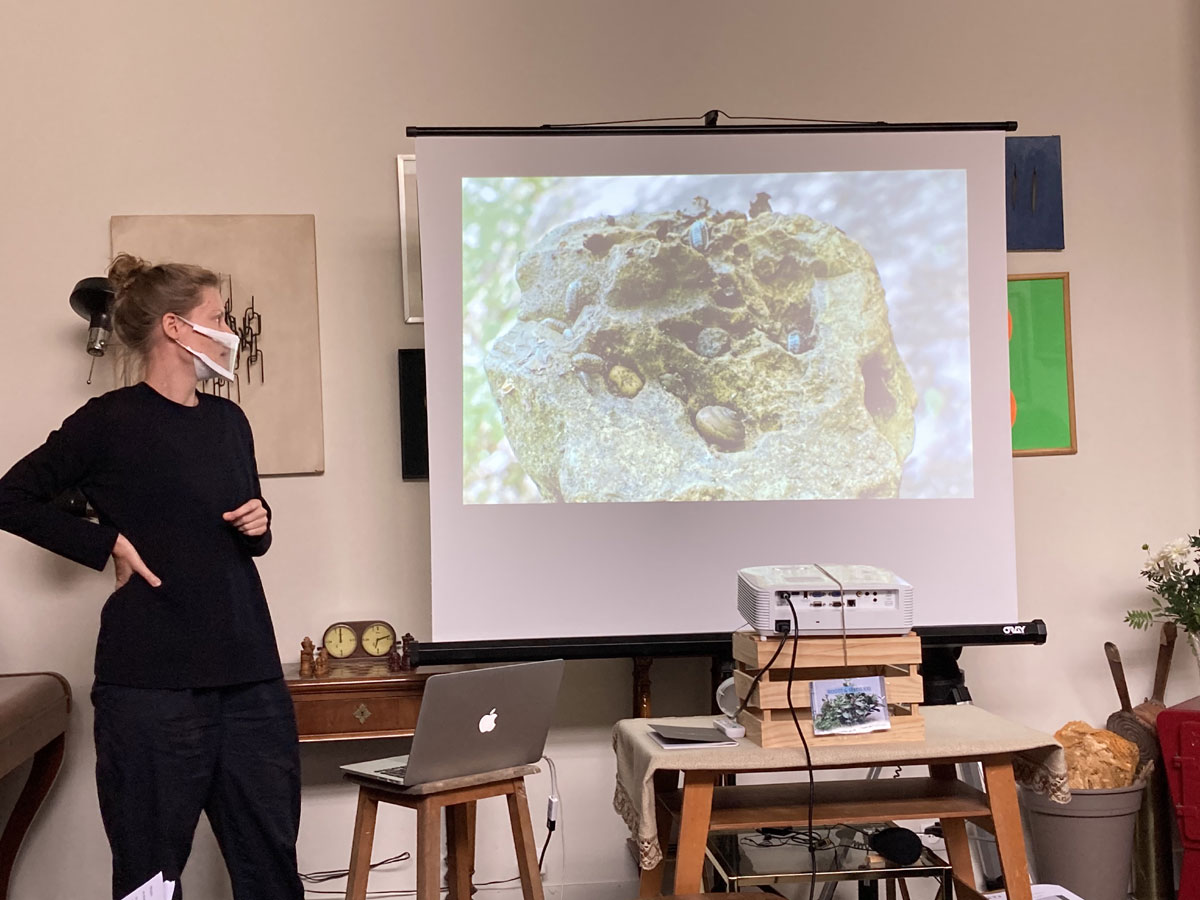
Marit Mihklepp, recipient of the residency grant, presents her project - Image Annick Bureaud
Partners
Roots & Seeds XXI. Biodiversity Crisis and Plant Resistance is an international cooperation project between Ars Electronica (AT), Leonardo/Olats (FR), University of Barcelona (ES) and Quo Artis (ES) as lead partner. It is co-funded by the Creative Europe Programme of the European Union. Leonardo/Olats has the support of the Daniel and Nina Carasso Foundation.
Quo Artis (SP lead partner), Ars Electronica (AT), Leonardo/Olats (FR), University of Barcelona (ES).
Project developed with the support of the Creative Europe Programme of the European Union.


Leonardo/Olats
Observatoire Leonardo des Arts et des Techno-Sciences
À propos / About | Lettre d'information Olats News



Pour toute (re)publication, merci de contacter / For any (re)publication, please contact Annick Bureaud: info@olats.org
Pour toute question concernant le site, merci de contacter / For any issue about the website, please contact: webmaster@olats.org
Design Thierry Fournier
© Association Leonardo 1997-2022